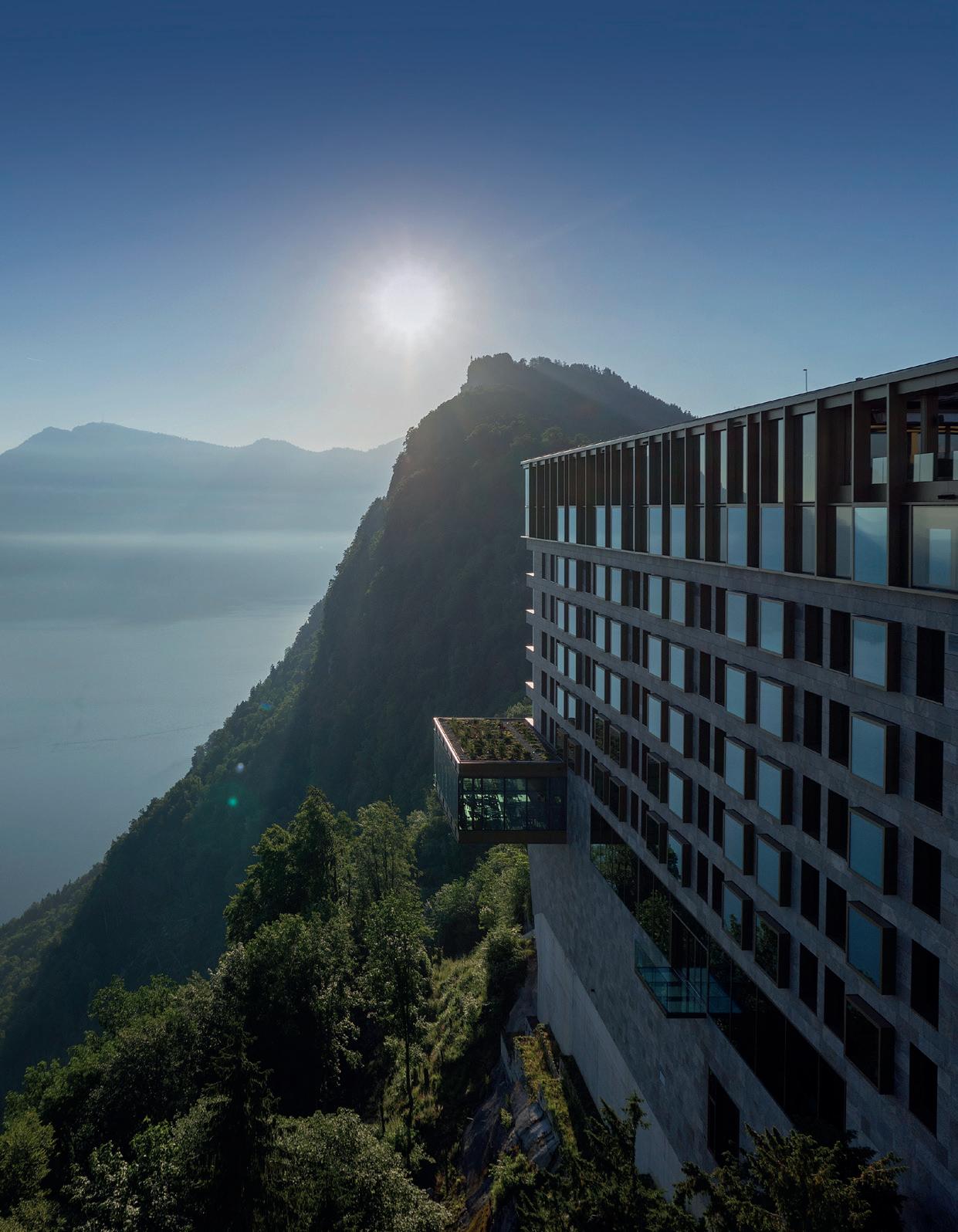JET ZERO CAN AIRLINES MEET THEIR CARBON NEUTRAL TARGETS?
FROM BEIGE TO BESPOKE THE RISE OF THE LUXE CORPORATE RETREAT
WILD WORLD IMMERSE YOURSELF IN ECO-RICH DESTINATIONS


JET ZERO CAN AIRLINES MEET THEIR CARBON NEUTRAL TARGETS?
FROM BEIGE TO BESPOKE THE RISE OF THE LUXE CORPORATE RETREAT
WILD WORLD IMMERSE YOURSELF IN ECO-RICH DESTINATIONS

THE MIDDLE EAST’S AVIATION INDUSTRY IS POISED TO REACH FOR THE STARS



Wake to breathtaking views of the Sheikh Zayed Grand Mosque and experience a stay where every detail is designed for comfort, connection, and inspiration.
From Fairmont Gold’s personalized luxury to world-class dining, private beach and poolside leisure, Fairmont Bab Al Bahr elevates every journey, whether for business or beyond.
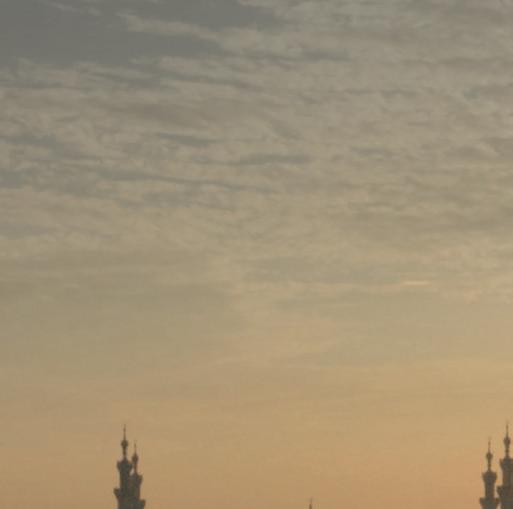




07 Hot Ticket: The world’s most accessible airports
08 Regional News: The latest airline, hotel, and travel news
10 Sustainable Traveller: The greener side of tourism and hospitality
12 Global News: An update on international travel
ABOVE AND BEYOND Dubai Airshow’s 19th edition will unite the world’s aviation leaders to chart the future of flight
15 We chat with Kelly Timmins, Executive Director, Marine Animal Operations and Sustainability, Atlantis Dubai



25
17 Kuredhivaru Maldives’ Stanislaw Pajdzinski on the resort’s next big chapter
18 We chat with Stephen Cheesebrough, Head of Development for Red Sea Global’s Red Sea Project

20 Harpreet Singh, Radisson’s VP of People & Culture for the Middle East, Africa, Southeast Asia Pacific and South Asia on the talent of the future
21 Op-Ed: For true sustainability, we must involve local talent
22 Frequent flyer with entrepreneur and F&B expert Chang Sup-Shin
23 Elevator Pitch with Maged Rizkalla, GM of Mercure Khamis Mushait
25 24 hours in Nairobi
27 Soothe yourself with the wellness-oriented side of travel and tourism
28 Splash out on luxury experiences and products
30 Our guide to… certified eco-friendly hotels in the Middle East


32 Our pick of cultural events around the world and inflight entertainment




38
Up in the air with sustainability Low-emission fuels and electric aircraft are being developed – but is a green industry truly achievable? 43
It’s a wild world ...and at these destinations, you can immerse yourself in some of the most treasured wilderness experiences across the planet
48
From beige to bespoke The corporate retreat is evolving: today, companies are seeking luxury, intimate escapes where strategy sessions blend with wellness, fine dining, and the outdoors


Salalah Bucket List
Five key activities in one of Oman’s greenest places
52
Into the blaze Deep in the Swedish woods, Knystaforsen is taking campfire dining to a new level
54
The wild comeback of Irish seaweed
From famine to fortune, seaweed has loyally been standing its ground
EVER SINCE the early days of my journalistic career, I’ve loved asking the question: If you could have any superpower you can imagine, what would it be and why? At least 80% of the time, the answer is “to be able to fly.” The answer is often linked to the deepest levels of the psyche, wherein to fly is a symbol of freedom. To liberate ourselves from the confines of the world we know thus far, and escape our limitations, expanding the inimitable joy offered by the power of possibility. To discover a new perspective is to find a gateway to another world. A wish to fly is ultimately a wish for hope – something the Greek myth of Pandora’s Box has taught us is the ultimate antidote to life’s hardships. Whether vacations with friends, or self-discovery-led solo travels, or travelling for a business trip, each journey represents the start of a new adventure that can leave us forever changed.
The roots of our history with flight have long been linked to the Arab world. The first human to fly, for instance, is said to have been a 9th-century inventor, astronomer, and Arabic-language poet from Al-Andalus – the Muslim-ruled part of the Iberian Peninsula. Long before the Wright brothers completed the first controlled, sustained flight using an engine-powered, heavier-than-air aircraft near the town of Kitty Hawk in North Carolina, Abbas ibn Firnas – who was also credited with inventing the first form of reading glasses – reportedly completed the first successful short gliding flight, using a wooden frame covered in feathers and silk, in around 875 CE. A statue of him currently stands outside Baghdad International Airport, created by Iraqi sculptor Badri al-Samarrai in 1973.
Each phase of the evolution of flight has offered humankind leaps and bounds of progress. Its effect on global mobility, and its economic impact, have revolutionised the way we trade, work, and live. Its ability to expand our cultural horizons has changed the way we connect with other humans, teaching us empathy while enriching everything from cuisine to the arts. The knowledge it has afforded us has been a key driver of technological and scientific innovation: flying hasn’t just inspired us, it’s changed the way we think. As the world prepares for the next era of aviation – one that will involve cutting-edge aircraft (from eVTOLs to the supersonic), digital transformation, sustainable air fuels (p.38), and more, the industry is preparing for a major leap forward. It’s an exciting time, and there is little doubt that this year’s Dubai Airshow (p.34) will be one of its most thrilling editions yet, complete with its largest-ever Space Pavilion.
Astronauts often talk about the profound impact of seeing Earth from space. They say that it gives them a deep new appreciation for this planet and all of the beautiful things it can contain, from its people to its nature, and the precious fragility of it all, with an overwhelming desire to protect it. This phenomenon is called ‘The Overview Effect’, and it is described as not just a new perspective, but a cognitive shift in awareness. While I haven’t (yet) had the chance to experience it myself, I imagine it’s an amplified version of how I feel when I visit wild, relatively untouched places across the globe (p.43). As the travel industry aims beyond the stratosphere to expand our world, we can do our part by protecting the celestial wonder we call home.

Yi-Hwa Hanna Editor
MOTIVATE MEDIA GROUP
EDITOR-IN-CHIEF OBAID HUMAID AL TAYER
MANAGING PARTNER AND GROUP EDITOR IAN FAIRSERVICE
CHIEF COMMERCIAL OFFICER ANTHONY MILNE
EDITOR YI-HWA HANNA
ART DIRECTOR CLARKWIN CRUZ
EDITORIAL CO-ORDINATOR LONDRESA FLORES
HANNAH BRANDLER, ALICE HENDERSON, RAMSEY QUBEIN, GEORGE GOMEZ, MARK CASWELL, NIVEA SERRAO, EDWARD RUSSELL, KATE BETTES, JOE PHELAN, PALLAVI SANGTANI, TAMSIN COCKS
GENERAL MANAGER – PRODUCTION S SUNIL KUMAR
PRODUCTION MANAGER BINU PURANDARAN
ASSISTANT PRODUCTION MANAGER VENITA PINTO
GROUP SALES MANAGER CHAITALI KHIMJI SENIOR PARTNERSHIPS MANAGER MURALI NARAYANAN
BUSINESS TRAVELLER MEDIA LTD. MANAGING DIRECTOR JULIAN GREGORY GROUP PUBLISHER RANIA APTHORPE
HEAD OFFICE: MEDIA ONE TOWER, DUBAI MEDIA CITY, PO BOX 2331, DUBAI, UAE; TEL: +971 4 427 3000; FAX: +971 4 428 2266; E-MAIL: BTME@MOTIVATE.AE
DUBAI MEDIA CITY: SD 2-94, 2ND FLOOR, BUILDING 2, DUBAI, UAE; TEL: +971 4 390 3550; FAX +971 4 390 4845
ABU DHABI: PO BOX 43072, ABU DHABI, UAE; TEL: +971 2 677 2005; FAX: +971 2 657 3401; EMAIL: MOTIVATE-ADH@MOTIVATE.AE
SAUDI ARABIA: REGUS OFFICES NO. 455 - 456, 4TH FLOOR, HAMAD TOWER, KING FAHAD ROAD, AL OLAYA, RIYADH, KSA;TEL: +966 11 834 3595 / +966 11 834 3596; EMAIL: MOTIVATE@MOTIVATE.AE
LONDON: MOTIVATE PUBLISHING LTD, ACRE HOUSE, 11/15 WILLIAM ROAD, LONDON, NW1 3ER, UK; E-MAIL: MOTIVATEUK@MOTIVATE.AE
BUSINESS TRAVELLER MIDDLE EAST IS JOINTLY PUBLISHED BY MOTIVATE MEDIA GROUP AND BUSINESS TRAVELLER MEDIA LTD SUBSCRIPTIONS:
BUSINESS TRAVELLER MEDIA LTD. INK, BLACKBURN HOUSE, BLACKBURN ROAD, LONDON, NW6 1RZ



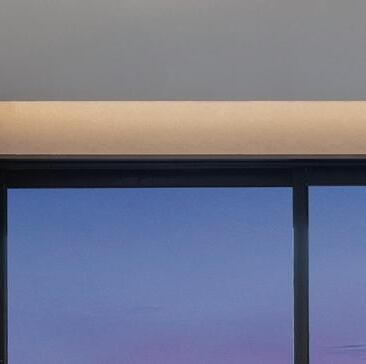




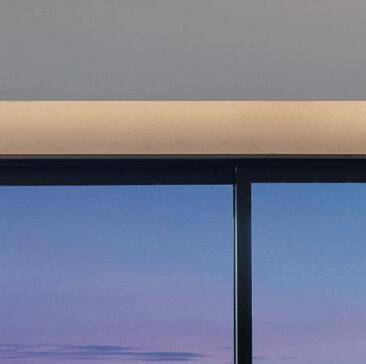




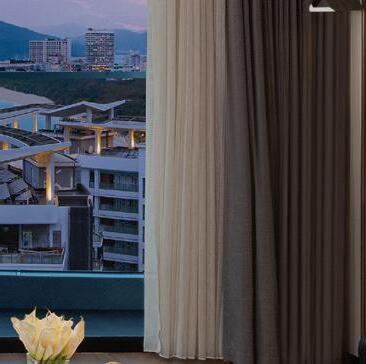
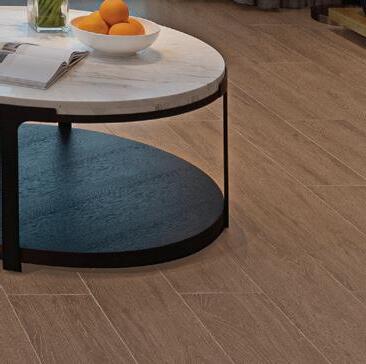


Step into a world where timeless elegance meets modern indulgence. A living legend since 1912, The Palace Hotel, Madrid is a beacon of luxury in the vibrant heart of the Spanish capital. Surrounded by fashion boutiques, flagship stores, and some of the city’s most sought-after dining spots, the hotel connects you to the dynamic pulse of modern Madrid. Following a meticulous restoration, its premium rooms and unique suites blend over a century of classic style with contemporary comfort, advanced technology, and bespoke service, perfectly suited to today’s discerning traveler.
Beneath the iconic Belle Époque glass dome, La Cúpula offers a refined culinary experience where art, history, and gastronomy converge. Just steps away, the 27 Club reinvents culture in a space inspired by Spanish literary heritage. Moreover, Madrid is home to 29 Michelin-starred restaurants and a growing community of visionary chefs, making it one of Europe’s most exciting gastronomic capitals. From private shopping experiences with luxury brands to exclusive events and personalized local connections, The Palace opens the door to a Madrid that is bold, stylish, and unforgettable.
Special Offer: Reserve now, get a complimentary fourth night, and elevate your stay with a tailored luxury shopping experience.



REGIONAL NEWS
New hotels, flight routes, and more

SUSTAINABILITY
GLOBAL NEWS
The greener side of tourism & hospitality Happenings from around the world


Dubai Airports has a new strategy to make Dubai International (DXB) and Dubai World Central - Al Maktoum International (DWC) the world’s most accessible airports by 2035
WORDS YI-HWA HANNA
THE 10-YEAR PLAN – which builds upon existing initiatives to enhance inclusivity and guest experience – aligns with Dubai’s vision to become a disability-friendly city, as well as the UAE’s broader commitment to the rights of People of Determination (PoD). The announcement of this next phase of Dubai Airports’ long-term accessibility strategy coincided with the launch of a new awareness campaign titled “DXB for All”, co-created with PoD to highlight their lived experiences navigating the airport. The campaign features six personal stories, including those of a child with sensory sensitivities, a deaf traveller, and a guest with a visual impairment, among others – underscoring how inclusive design and empathy can transform travel experiences. Featured advocates in DXB for All include Emirati accessibility pioneer Fatma Al Jassim, former Paralympic swimmer and inclusion consultant Jessica Smith, Dubai-based mother Yasmin Carey and her son Ellis, as well as Layth Kamal, Mohammed Alghafli, and Ahmed Butti, each representing different PoD communities.



H WORLD INTERNATIONAL
– which owns brands including Steigenberger, Jaz in the City, Zleep Hotels, and Ji Hotel – has announced the signing of IntercityHotel Riyadh Al Rayaan, which is currently set to open in June 2027. The 216-key property will mark the group’s seventh IntercityHotel in the Middle East and its second in Riyadh, reinforcing its expansion strategy across the kingdom.

also include a ballroom, eight meeting rooms, a gym, and a swimming pool, catering to both business and leisure travellers.
The new hotel will be developed in partnership with Wahat Sudair Hotels Company Limited, and will feature modern guestrooms, an all-day dining restaurant, and a flagship lobby café, The Breakery. Facilities will To be at liberty...
The announcement coincides with H World Group’s 20th anniversary, as it continues to expand its portfolio spanning over
12,000 hotels worldwide. As part of its expansion strategy, the company has been working to reflect and cater to rising demand from both leisure and business travellers, particularly from key source markets such as Germany and China.
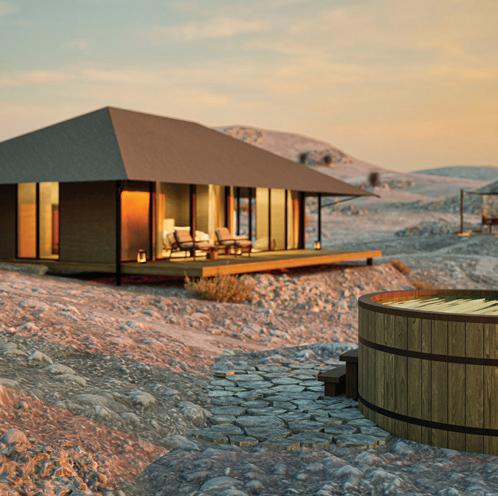
OFF-GRID LUXURY
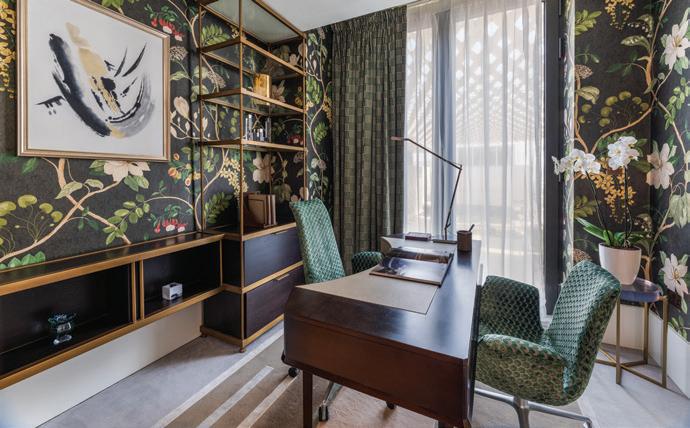






MANDARIN ORIENTAL, DOHA, has partnered with Liberty London on a series of themed rooms: the result of a year-long collaboration marking the British brand’s debut in Doha, and the opening of Liberty Home –its first showroom outside the UK, located in Msheireb Downtown Doha. As part of the collaboration, Liberty –famous for its floral fabrics

and bold, unique prints that blend timeless motifs with modern appeal – has redesigned four of the hotel’s most distinguished rooms and suites, including the Baraha Presidential Suite, using fabrics and wallpapers from its Botanical Atlas and The House of Liberty collections. Guests of the Liberty Rooms & Suites can also book in for The
Liberty Experience. Starting from QAR 1,700 per night, it includes bespoke welcome amenities, a Liberty-branded gift, daily breakfast at Mosaic, and a late checkout until 3pm. The package also offers exclusive access to Liberty Home, with a private showroom tour, a personalised consultation, and refreshments at the Liberty Café.
Parvara, a luxurious new desert sanctuary, is set to open in the UAE’s Northern Emirates this November. Described as neither a hotel nor a camp, Parvara is set in Fujairah’s rugged Jabal al-Hamri area. It will offer an inclusive, offthe-grid escape aimed at restoring balance and connection. Guests will stay in tents designed to blend into the mountain terrain, all intended to encourage stillness. Meals will include Arabic-inspired breakfasts and recooked dinners cooked under the open sky. Guided activities and opportunities for mindful re ection will also be available.
THE BEAUTIFUL Riyadh Air cabin crew in front of Jamila, the aircraft used for its inaugural flights

The airline has launched its inaugural flights and opened an opluent new lounge
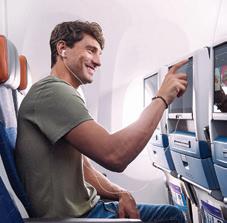
flydybai will be upgrading its economy class experience from this month onwards, making complimentary meals and inflight entertainment available to passengers at all fare types in economy. It’s a significant step in the brand’s ongoing evolution.
SAUDI ARABIA’S new national carrier commenced services on 26 October. Its long-awaited inaugural route kicked off with the first flight in a daily service between Riyadh’s King Khalid International Airport and London Heathrow airport.
The flight was carried out on a leased Boeing 787 aircraft named ‘Jamila’. While it carried paying passengers, tickets were only open to employees and affiliated staff of Riyadh Air as well as Saudi’s Public Investment Fund (PIF), which

Etihad Airways recently launched daily flights to Addis Ababa, Ethiopia, marking its debut in the East African country and the formal start of its new venture with Ethiopian Airlines. It also recently launched flights to Sumatra and Phnom Penh.

owns the airline. The airline has also launched its loyalty programme, ‘Sfeer’. Perks of the Sfeer loyalty programme include loyalty points that can be earned towards accruing levels – and shared seamlessly with family, friends, and colleagues – along with membersonly free wifi, status benefits such as lounge access, and more, all of which can also be transferred between one’s circle. Unlike many other airline rewards programmes, Sfeer Points will not expire. Ahead of the inaugural flight, the company had also unveiled the Hafawa Lounge – a desert-inspired haven blending Saudi elegance and hospitality and tech-driven comfort, at King Khalid International Airport, exclusively available to its Business Class and Business Elite passengers. The lounge, which takes its name from the Arabic word meaning warm hospitality, “seamlessly integrates Saudi heritage with innovative technology” to deliver a “sophisticated and exclusive environment.”

Etihad Airways has been busy with new route launches – the UAE national carrier will also be launching flights to Kabul, Afghanistan from 18 December 2025. The flights will run thrice weekly on Etihad’s A320 aircraft, with eight seats in Business.

Air Astana continues to expand its network across the Middle East and Asia: it will be resuming flights to Jeddah, Medina, and Malé, and boosting flights to Dubai, Thailand, Phu Quoc, and more this year, all run on Airbus A320neo and A321LR aircraft.
OCTOLA PRIVATE WILDERNESS, an ultra-luxury Arctic retreat in Finnish Lapland, has become the first travel destination worldwide to keep an eye on the cleanliness of its air, by installing research-grade technology to monitor ultrafine air particles. The system, installed within Octola’s private estate, is typically used in academic and government research, and provides guests with verified data on the purity of Lapland’s air – which is considered among the cleanest in the world. Octola hopes to use the active monitoring and reporting of this data to set a new benchmark for environmental responsibility and guest care, and to offer a rare, measurable insight into the purity of Artic air. The initiative builds on Octola’s sustainability ethos, and its mission to offer guests experiences built around the healing benefits of Lapland’s high-quality air and unspoiled nature. “Our surroundings have always offered a rare purity. Now, we have the data to prove it,” said Octola’s founder, Janne Honkanen. He added: “The purity of our air is something guests often describe as healing, almost otherworldly. With this monitoring in place, we can ensure we protect it and hold ourselves accountable to the highest possible standard.” The new tech will also cover the brand’s newest outpost, Octola II,
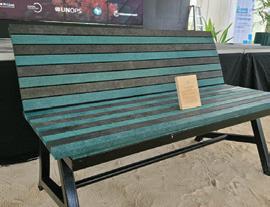
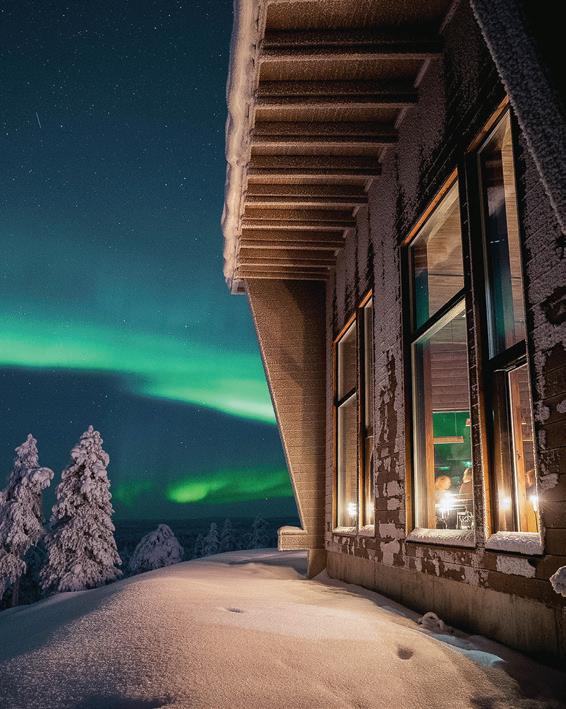
which is set to open in December. The Octola II Lodge promises nearconstant silence with spectacular displays of the aurora borealis, or the glow of the Midnight Sun. The new lodge will include five bedrooms, a spa, saunas, a gym, and special viewing areas for the Northern Lights. Also launching soon is Respiro Octola: a bespoke wellness programme featuring breathwork, sauna rituals, yoga, and ice swimming, with itineraries that draw upon clean air research.
Wilderness boasts 1,730 acres of offgrid serenity in the Arctic Circle
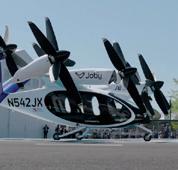
ACCORDING TO new research from Joby Aviation, eVTOL air taxis aren’t just quieter than the comparable aircraft of a traditional helicopter – they could even change the overall soundscape of busy cities. While the average person admittedly isn’t commuting by helicoper, the comparisons were striking: during test flights, the electric aircraft exceeded ambient city noise for only 0.17 square miles, compared with 45 square miles for helicopters. With air taxis set to transform the way we travel, to possibly even replace ground-based taxis in time, they could have wider postive impact than anticipated, by offering quieter, more community-friendly ways to travel around urban areas – like reducing chances to use loud car horns.
SIYAM WORLD Maldives has unveiled the nation’s first dedicated Plastic Upcycling Center, in collaboration with local environmental NGO CLEAN Maldives. The first centre of its kind to operate at this scale at
a resort in the country, it marks a major step forward in sustainable resort operations, and is already sparking wider conversations across the country about responsible waste management and community-led
environmental action. The centre turns discarded plastic items, such as oil containers, cleaning product drums, and shampoo bottles, into functional products like sunbeds, planters, and outdoor seating. Beyond
resort-generated waste, the facility also accepts plastic from the nearby inhabited island of Kudafari. Of the upcycled items, 60% will remain at the resort, while 40% will be distributed by CLEAN Maldives.
















1 SWISS unveils storytelling safety video for first A350 (Above) The new onboard safety video, which will replace the current animated video, gives passengers all the required safety instructions while tracing the journey of a Swiss woman travelling back to her homeland from New York. Her memories of previous adventures across Switzerland – such as trail running through archetypal Swiss mountain landscapes and visiting people in Zurich and Geneva –flash up on screen, interspersed with SWISS air crew demonstrating how to use onboard safety equipment. The airline’s first Airbus A350 hosted the new video’s first onboard screening, on a delivery flight to SWISS from Toulouse to Zurich, in early October. Named Lausanne, the aircraft took its first test flight in August, before its first passenger flight from Zurich to Palma de Mallorca on 25 October.
2 Courtyard by Marriott to open at Nairobi’s International Airport (Right) Aksaya Estates Limited has signed an agreement with Marriott International to open its second Marriott-branded property in Kenya, at Jomo Kenyatta International Airport (JKIA). Currently set to open in 2027, the Courtyard by Marriott Nairobi Airport aims to offer a contemporary, flexible space for both business and leisure travellers transiting through Kenya’s main international gateway. Construction of the hotel, which is anticipated to feature approximately 180 rooms and suites, is already underway. Amenities will include two restaurants and bars, an expansive landscaped courtyard with a fire pit, a rooftop fitness centre with an 18m swimming pool, and versatile indoor and outdoor event spaces catering to meetings, social gatherings, and business functions. It has secured Preliminary EDGE Advanced Certification, the International Finance Corporation’s (IFC) sustainable building standard that recognises resourceefficient design and construction. The new hotel will be part of the Marriott Bonvoy network.

3 One&Only Moonlight Basin, Montana, opens in western US (Below) One&Only’s first resort and Private Homes in the United States, One&Only Moonlight Basin in Big Sky, Montana, opens on 18 November. The upcoming ultra-luxury alpine resort’s launch was preluded by its new ski lodge, One&Only Sky Lodge, which opened last December. Located in the untamed wilderness of Montana and surrounded by vast and treasured mountain ranges, the resort is a short drive from Yellowstone National Park. The Moonlight Basin property spans over 8,000 acres and the One&Only resort is situated inside the community on 240 acres. Renowned chef Akira Back will also be opening his namesake restaurant at the property.

4 US passport falls out of top 10 (Right) For the first time in 20 years, the US passport is no longer ranked among the top 10 most powerful in the world. In 2014, it held the top spot in the Henley Passport Index – a system that ranks passports based on the number of countries they enable a traveller to enter without a visa. But in a recent update, the US passport has fallen from 10th to 12th place and is now tied with Malaysia, with both nations offering visa-free access to 180 of the 227 worldwide destinations counted by the index.

5 British Airways boosts flights to Middle Eastern destinations (Above) The UK carrier has outlined plans to increase flights from London Heathrow to Abu Dhabi, Bahrain and Saudi Arabia this winter. The carrier’s Heathrow-Bahrain service expanded from three flights per week to daily from 27 October, adding more than 9,000 seats to the route. Meanwhile, its Heathrow-Abu Dhabi route – which was suspended for the summer 2025 season – will return with a daily service this winter. British Airways will compete with UAE flag carrier Etihad on the route. The airline’s two services to Saudi Arabia will also see more flights this winter and beyond. Riyadh will increase to 12 flights per week this winter, rising to 14 from summer 2026, while Jeddah will move from the current four flights per week to five next summer.
6 Global air travel to hit 9.8 billion passengers in 2025 Global air travel is back on a growth trajectory – but it’s not a simple, universal rebound, and the skies aren’t equally blue everywhere. According to Airports Council International (ACI) World’s latest World Airport Traffic Report (WATR), passenger traffic is projected to hit 9.8 billion in 2025, a 3.7% increase over 2024. The report, drawing on data from more than 2,800 airports across 185 countries and territories,

underscores a story of strong international demand offset by uneven domestic performance and region-specific challenges, including policy and geopolitical turbulence.
7 KLM celebrates turning 106 (Below) The oldest airline in the world operating under the same name, KLM Royal Dutch Airlines, has celebrated its 106th birthday by adding Villa Rameau to the airline’s iconic Delft Blue collection –miniature houses typically gifted to World Business Class passengers on long-haul flights, that have become popular collectors pieces. The new addition – House #106 – is a replica of the city of Leiden’s Villa Rameau (built in the 1600s), adjacent to the city’s Pieterskerk church and now home to the American Pilgrim Museum. The surrounding neighborhood is where many of the original pilgrims who

travelled on the Mayflower to America lived before their journey. It is also where the pilgrims celebrated the fall harvest festival, which is considered the origin of today’s Thanksgiving.

8 Thai Airways tests premium economy offering with flat beds (Above) Thai Airways is testing a new concept that blurs the long-standing boundaries between premium economy and business class. Dubbed Premium Economy Plus, the product quietly surfaced on the airline’s verified Facebook page – without a press release or formal announcement –and debuted on 26 October 2025, on select routes from Bangkok to Chennai, Dhaka, Hyderabad, Jakarta, and Kathmandu. The new class promised “spacious seats, generous legroom, and exclusive services.” Despite the buzz online, at time of press, there has not yet been an official statement on pricing, award availability, or whether loyalty miles could be redeemed for this new fare type, nor if it would receive distinct onboard dining or dedicated ground services.





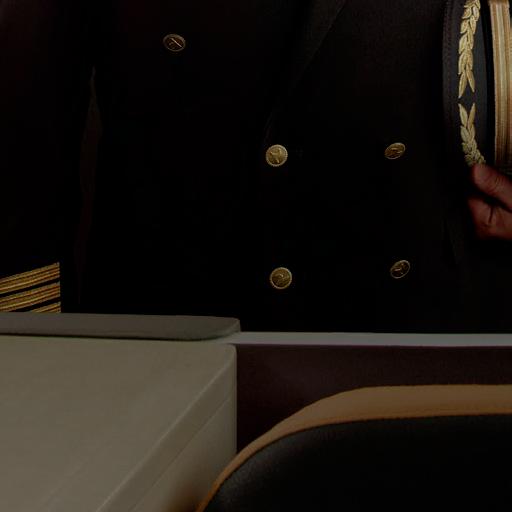
Thanks for honoring us with three Skytrax World Airline Awards categories, including our 10th time as Europe’s Best Airline.
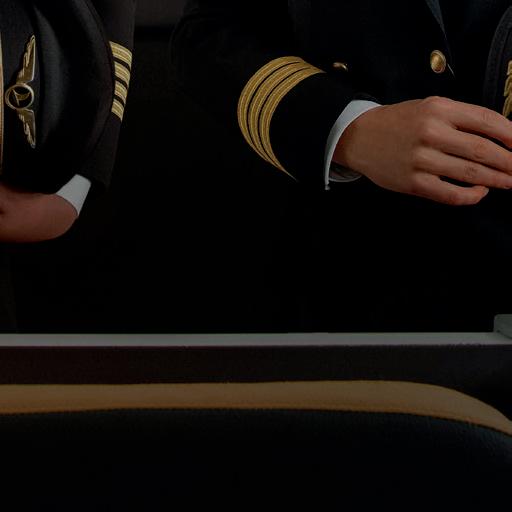


Recognised by EarthCheck for its top-level environmental efforts, Atlantis Dubai is working to scale its responsible sourcing and operational transparency. We spoke to Kelly Timmins, its executive director of marine animal operations and sustainability, to learn how it’s translating its ethos into tangible action
S SUSTAINABILITY becomes an essential measure of excellence in global hospitality, a growing number of hotels are rethinking how luxury and responsibility can coexist. And at Atlantis Dubai, that ethos is rooted in action rather than mere aspiration. In 2024, 38.9% of its perishable items were sourced within the UAE, and 53% of its tea, coffee, and sugar were Fairtrade or equivalent certified. All of its contracted seafood, including feed for its 65,000 marine animals, is now fully traceable through Seafood Souq’s SFS Trace technology, giving chefs complete visibility from ocean to plate. Winnow technology has helped reduce edible food waste by an average of 53.4% across its buffet restaurants, while its in-house filtration and bottling plant has replaced more than 8 million single-use plastic bottles since 2022. The resort also supports vulnerable communities through food redistribution, donates supplies to animal shelters, and recycles soap and cigarette waste into new products. In short, it is redefining what sustainable luxury looks like in practice.
Ashe says, “is seeing the cultural change within our business – watching our teams understand sustainability and drive the change themselves. None of this would happen without the commitment from the whole organisation.”
That culture of accountability has been built deliberately, step by step. When Atlantis set out to eliminate single-use plastic water bottles across its resorts, it wasn’t a quick switch – it was a complete overhaul. First came the installation of an on-site bottling plant to produce filtered drinking water in reusable glass bottles for rooms and restaurants. The system then expanded to its buffet venues and for major events, and eventually to Atlantis The Royal, extending to staff facilities as well. Today, filtered water dispensers are positioned across the properties, from guest areas to back-of-house, ensuring both convenience and compliance with sustainability goals. Timmins recalls a time when “each staff member would

ABOVE
Kelly
Timmins

For Timmins, the achievement of this type of progress starts with people. That includes both guests and the thousands of colleagues behind the scenes. “The most meaningful achievement for me,”
‘Every small action, multiplied by a community, can create huge impact’
go through six plastic bottles a day.”
Now, she says proudly, “you’ll see our housekeeping, food and beverage, and security teams all carrying reusable bottles – and that small change spreads, because those people go home and influence their families too.”
While operational transformation is critical, so is scientific credibility. The Atlantis Atlas Project – Atlantis Dubai’s conservation fund, launched in 2021 – has now surpassed the half-million-dollar mark in support of marine and environmental projects across the region. Every project it funds is vetted by a conservation science committee, Timmins explains: “We only back initiatives that demonstrate measurable, real-world impact.” Among these is the Oman Whale Shark Project, which gathers baseline population data to guide government-led protection measures, and the UAE Dolphin Project,
which uses boat-based surveys to map local dolphin populations. Atlantis also backs initiatives like Goumbook’s Save the Butts campaign, which recycles cigarette waste into building materials while engaging thousands of community volunteers in beach clean-ups. “It’s not just about funding research,” says Timmins. “It’s also about education, and turning awareness into action.”
That philosophy extends to how guests experience the resort. Through the property’s sustainability and conservation platform, every interaction offers a subtle opportunity to learn. QR codes on refillable water bottles, icons on restaurant menus, and a dedicated in-room sustainability channel all help guests understand the story behind the choices they see – from locally-farmed, organic produce to traceable seafood. “We want guests to feel connected to these efforts without ever feeling lectured,” Timmins notes. “Sustainability should feel accessible, not intimidating.”
To ensure progress is measurable, Atlantis has embedded data-driven benchmarking across operations. The resort group is EarthCheck certified –with Atlantis The Palm and Aquaventure World retaining Gold status, and Atlantis The Royal having thus far earned Silver. “Certification is important because it keeps us honest,” says Timmins. “It’s how we track our electricity, water, and waste performance year on year, and hold ourselves to international best practices.” The resort’s commitment to measurable excellence has earned recognition well beyond the region. It was the first in the Middle East to receive the Forbes Verified Responsible Hospitality badge, a programme that combines guest experience standards with sustainability compliance. In 2024, Dubai’s Department of Economy and Tourism also awarded Gold status to both Atlantis resorts under its official sustainability guidelines. But behind the certifications lies something less tangible – the resort’s ability to inspire change on a human level. They want to show that luxury and sustainability can coexist seamlessly, Timmins says: “Our guests can enjoy an exceptional experience knowing it’s being delivered responsibly.” That mindset also guides how Atlantis communicates with its audience. Timmins and her team conduct monthly reviews of guest survey responses, analysing comments related to environmental responsibility.



“It’s incredibly valuable,” she says, explaining that sometimes, perception shifts because of the smallest detail –like keeping the words on a straw that proclaims: ‘I am not plastic.’ That feedback loop helps them identify what matters to guests and improve accordingly.
The resort’s sustainability strategy is also deeply intertwined with Atlantis’s marine animal operations, which provide a unique platform for education and awareness. “When people see marine life up close – the dolphins, rays, sharks – it creates an emotional connection,” Timmins says. “They start to care about protecting it.” This connection between conservation and guest experience is reinforced through hands-on initiatives such as Green Meetings, where revenue from corporate events contributed directly to the resort’s conservation fund. Similarly, one US dollar from every marine animal encounter is channelled into environmental projects – a selfsustaining model that ties business success to ecological stewardship. It’s not about asking guests to donate, but rather, embedding impact into what they already do. Asked how she measures success, Timmins doesn’t hesitate: “It’s seeing that ripple effect – guests leaving more aware, employees taking habits home, and the wider industry recognising that sustainability isn’t an add-on; it’s an
advantage.” That ethos is reflected in how Atlantis selects its conservation partners. Projects are prioritised for their local relevance, scientific rigour, and alignment with the animals and ecosystems under the resort’s care. “We always try to support local first,” she says. “If a project is strong enough and based here in the UAE, that’s where we start.”
Looking ahead, Timmins says Atlantis Dubai’s focus is now on accelerating waste reduction and energy efficiency, in line with the UAE’s national target to reach net zero by 2050. “We’re not waiting until then,” she says. “We’re constantly looking for ways to go bigger and faster, whether through technology, design, or collaboration.”
For all her optimism, she recognises the urgency of the challenge – and where her hope lies. “It’s in education,” she says firmly. “You see children today asking questions about wildlife, about sustainability, about their future. They’ll be the ones driving meaningful change.” Her advice to anyone looking to live a more sustainable life is refreshingly pragmatic. “Think about your daily choices,” she advises. “Every small action, multiplied by a community, can create huge impact. Whether it’s reducing waste, sourcing locally, or choosing sustainable seafood – it all adds up.”
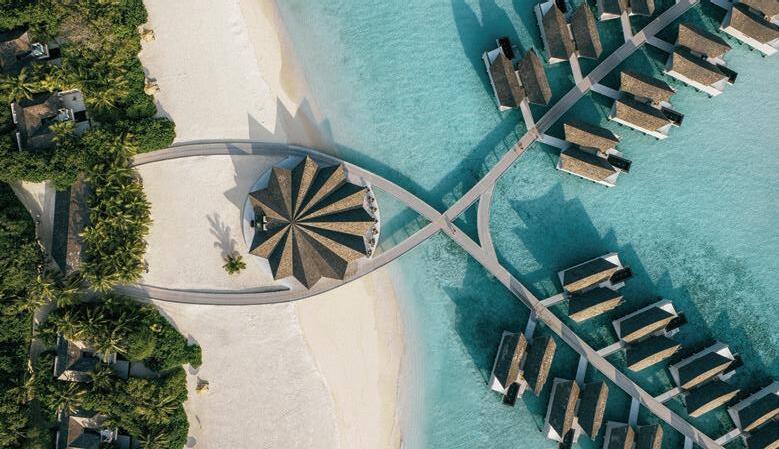







Reimagining Kuredhivaru: Stanislaw Pajdzinski on leading the resort’s next chapter
MORE than seven years of operations, Kuredhivaru Resort Maldives is preparing for one of the most exciting transitions in its history. Opened originally as Mövenpick Resort Kuredhivaru Maldives, the property is now on track to join the Ennismore lifestyle collection under the Mondrian brand in 2026. At the forefront of this transformation is general manager Stanislaw Pajdzinski, an energetic hotelier known for his authentic leadership style, strong operational background, and ability to build high-performing teams. With a career that began on the front lines of hospitality, Pajdzinski has developed an instinctive understanding of what drives both guests and employees.
APajdzinski has strengthened Kuredhivaru’s position in a highly competitive market by securing sustainable growth and guest loyalty, building a loyal guest base that reflects the resort’s evolving identity. He focuses on what truly matters for those staying on a remote island: authentic connection, thoughtful comfort, and the sense of being genuinely cared for. As Kuredhivaru moves towards its Mondrian chapter, Pajdzinski plans to keep what guests already love, elevate the experience to a new level, and
ensure that every detail reflects the sophistication and energy of the brand’s next evolution.
Pajdzinski believes that excellence is built through shared vision. His philosophy of luxury goes beyond design or amenities – it is reflected in the professionalism, empathy, and attention to detail shown by every member of his team. “A luxury resort must start with a luxury mindset,” he says, explaining that Kuredhivaru’s talented team has been chosen not only for their expertise, but for their ability to uphold and elevate the resort’s values.
Guest feedback also plays a central role. Every comment is treated as an opportunity to learn, anticipate, and improve. The result is a resort where generosity and care are not slogans, but daily habits.
For Pajdzinski, gastronomy is not just one of the resort’s pillars, it is a philosophy. Over the years, Pajdzinski has built a culinary team that mirrors his own passion for excellence and creativity, giving each chef the freedom to express their talent while maintaining uncompromising standards.
Kuredhivaru’s culinary concept is shaped by the latest global trends and inspired by restaurants that the resort’s guests love most. Pajdzinski understands that guests staying
on a Maldivian island rely entirely on the resort’s dining experience for the duration of their stay, which is often more than ten days. “That’s why variety, authenticity, and quality are essential,” he explains. “Each meal must be both a discovery and a comfort, a balance between global inspiration and the familiar flavours of home.”
His own international experience and personal passion for fine dining, cultivated through years of exploring some of the world’s most celebrated restaurants, have helped him refine this approach. Under his direction, Kuredhivaru has become known as one of the Maldives’ best culinary resorts.

For Pajdzinski, leadership also means responsibility to people, to the island, and to the ocean that sustains both. During his tenure, Kuredhivaru has strengthened its sustainability focus with tangible actions: solar power integration, coral
restoration, and continuous efforts to reduce single-use plastics. But what truly defines the resort’s approach is its connection with the surrounding islands. Local fishermen supply its fresh seafood, and Maldivian artisans and farmers contribute to the resort’s operations. “Sustainability is not a slogan for us,” Pajdzinski says. “It’s a balance between protecting nature and empowering the communities that make the Maldives what they are.”
Through partnerships, cultural events, and education initiatives, Kuredhivaru ensures that guests experience the Maldives in a more authentic and responsible way. “When our guests see that their stay supports both the environment and local livelihoods, they leave with something far more meaningful than just memories,” he adds.
As Kuredhivaru prepares to enter a new era under the Mondrian brand by 2026, Pajdzinski sees this transformation as a natural continuation of the journey he began in 2020. “It’s not about changing who we are, but amplifying what makes this place special – its spirit, its people, and its ability to evolve,” he says. His focus is on building a resort that embodies sophistication without pretense, where design, culture, and emotion meet to form an experience both timeless and new. The upcoming transformation will strengthen Kuredhivaru’s position among the top lifestyle resorts in the region, blending Mondrian’s playful energy with the authenticity that has defined the property from the beginning. “Our future is about balance,” Pajdzinski reflects. “Between bold ideas and quiet details. Between innovation and the human touch. That’s what modern luxury truly is.”
“We achieved everything possible under Mövenpick,” Pajdzinski says. “Now it’s time to take Kuredhivaru to the next level – to make it a destination that defines a new era of Maldivian luxury.”

Blending regenerative design with resort-style living, Laheq Island reimagines what it means to own a piece of Saudi’s new holiday haven
TUCKED AWAY into one of the most beautiful parts of the Saudi Red Sea, Laheq Island – a recently-unveiled project in Red Sea Global’s (RSG) growing portfolio –represents a major new chapter in Saudi Arabia’s evolution: its first community that is designed for resort-style living and ownership. Set to open in 2028, Laheq is spread across 400 hectares of pristine shoreline, where a “Forever Garden” design, envisioned by Foster + Partners, meets RSG’s regenerative vision. With residences, two luxury hotels, and a marina built for modern explorers, Laheq is so much more than an island. For tourists, it’s a chance to experience one of the most exclusive, pristine stretches of nature and futurefocused living in the world. For potential buyers, it’s a statement about what it means to be able to live in stillness, while embracing sustainability, and redefining sophisticated living.
For Stephen Cheesebrough, Head of Development for RSG’s Red Sea Project, it’s become a career highlight. Being part of something like this isn’t just a chance to create something new – it’s one that can even impact the future of a nation. Saudi’s recent tourism efforts have already been changing the wider global perception of the country, and being on the frontlines of a project like this – with a company that has been lauded for its innovative approach
towards regenerative tourism – has given him a front-row seat to the impact that the region could have on the future.
“When I’m at the airport or in the resorts, and I get to meet guests that have come from as far as Brazil, it’s amazing to hear their response and feedback to what they’ve seen and experienced,” he says. Wide-reaching campaigns marketing Saudi’s new scope for tourism have already stunned curious travellers far and wide, but there is no substitute for experience. It’s all taken to another level with the sincere warmth of Saudi hospitality, and the infectious enthusiasm fostered by the country’s growing young workforce.
ABOVE Laheq Island
“For these individuals, their role isn’t just taking people on an adventure trail –it becomes an opportunity for education and storytelling. When I go on a hike with one of my Saudi colleagues, all of a sudden I’m learning about the history and the culture, and it becomes more than a chance to discover the natural landscape. It really makes an impact.”

RSG understands that sustainability isn’t just about ecological preservation and regeneration. “The [human] impact of our developments is something we measure. We’re probably the world’s largest and most ambitious regenerative tourism developer. Yes, the natural environment and what we’re doing in that regard has a clear focus – but we also care deeply about the socioeconomic impact of what we’re doing, like creating employment for instance – and the ripple effect that our projects are having on the economy in Saudi Arabia is huge,” Cheesebrough says. For RSG, sustainability is not an afterthought – it’s considered from inception, then built into the infrastructure. Project like this could change the way people live on a dayto-day basis, and offer a value that appreciates with time. “There’s already a big trend of people becoming more aware of their carbon footprint and their impact on the environment. A large part of the interest is the opportunity to own a home in a destination like ours, which is so focused on regenerative tourism and sustainability. But it’s also the lifestyle itself – the natural beauty, and ensuring that it’s protected and enhanced for a long time to come. The amazing beaches, corals, avian species, and marine life you’ll already see there today is spectacular. It’s absolutely one of the most exciting tourist destinations. But what makes it even more exciting is our commitment to boost that over time. I think that makes buyers even more excited – to know that you own a home in an environment that is truly sustainable, and that will also improve over time.”
Laheq Island has a cap placed on the number of tourists and residents allowed in the destination, so the traffic (human and otherwise) won’t erode the natural environment. “That’s another commitment on our side, in terms of the density and preserving the capital value of the assets in that way.”
Another factor elevating Laheq’s offering is the high standard of service it will offer. RSG’s portfolio includes
a number of guest-facing assets, including two outstanding hotels: Shebara and Desert Rock. “We’re using those hospitality capabilities to operate our residential communities,” Cheesebrough explains, referring to both Laheq as well as Shura Island, another recently-launched major project in the region. “When [people] are at the destination, we look after them. When they’re not there, we look after their properties.”
The prioritisation of the experiential is also taken into account from the ground up, including the architecture. “From an architectural standpoint, we’re continuing to push the envelope by introducing really distinct assets,” Cheesebrough says. “There is no sense

will be wellness-focused, and the other centered around the marina. Both will play a key role on the island. “The hotels need to be viable as standalone destinations for transient guests coming down,” he says. The homes are also very much predicted to feed into the destination’s touristic appeal. Each one will place a high focus on wellness, for instance, and with an extremely highprofile operator set to run the wellness hotel, the resort is anticipated to equally be a top pick for tourists as well as being a platform for homeowners to check in with regularly, for access to expertise on their diagnostics, diet, fitness, or other modalities. The marina-based hotel, meanwhile, is set to be a go-to location for residents’ family gatherings or nights out – they’ll even offer catering services.

“At RSG, we also care deeply about the socio-economic impact of what we’re doing”
of ‘Have I seen that somewhere else?’ We’ve built assets that are clearly world-class, but they have a design language that is so unique as well.”
Laheq Island is a perfect example of this. From the moment guests land, they’re greeted with high attention to detail, from the electric cars that pick them up, to a dramatic arrival to the island, where a boat will pull them into the marina. While arrival by boat will be the standard, a road-based entry is available for those who prefer to journey by car. RSG treats customer feedback and clients’ individual preferences with the highest level of respect. “We look at our customers, the personas, the different individuals that own homes on the island. And then we consider what we need to deliver to ensure an ideal length of stay, and repeat visitation… to make sure this is a true holiday home that people keep coming back to, with a real community.”
While further details of Laheq Island’s hotels are yet to be announced, one
Since the project was announced, it has drawn a lot of interest from international buyers. Cheesebrough says it holds equal appeal for Saudi buyers – who could set up a home office there then travel between Riyadh and Jeddah for meetings – and global clients, such as UNHWIs in the tech space, or people passionate about boating and who already own a yacht, or plan to acquire one in the near future. “We have 90 islands – they could start at AMAALA, then go to Shebara for lunch, or spend a day at the beach clubs there, before heading to Shura Island, then head up the coast to Al Wajh.”
“I think the offering speaks a lot to families, in particular those seeking a multi-generational investment,” he says. The island has been master-planned with kid-friendly programming for every age, from football academies to tennis and conservation-inspired adventures, – and they envision families coming back year after year, driven by kids and adults alike. “It’s the sort of person that values balance, and the modernminded HNWI who wants to spend their wealth on experiences because they understand that productivity in the future isn’t necessarily tied to time output, it’s about the way they live.”
With a recent change of law now rendering non-Saudis eligible to purchase, the diversity of the community is only set to grow. RSG is working
LOCATED APPROXIMATELY 30 minutes away from Laheq Island by boat – or a 25-minute drive from Red Sea International Airport (RSI) – Shura Island is the main hub island at The Red Sea. It’s home to Saudi Arabia’s first island golf course, which will no doubt appeal to both residents of and visitors to Shura itself, as well as those from the nearby Laheq Island. While each will offer their own vibe – with Laheq being more focused on privacy and a quieter form of luxury, and Shura to become a vibrant hub for both land-based and waterfront adventures – the two are designed to feed into each other in many ways, strengthening the offering for tourists and homeowners in both. One key development there that’s also been piquing the interest of both locally-based as well as international buyers is the Four Seasons Private Residences Red Sea at Shura Island. Set within Shura Links, Saudi Arabia’s first island golf course, which was designed by Brian Curley, this collection of 75 villas was also designed by Foster + Partners, and features interiors by Goddard Littlefair. The homes at Four Seasons Private Residences Red Sea at Shura Island come in a range of three to five bedrooms, with private infinity pools, and views of either the Red Sea or the golf course. Each home in this project combines open-plan living with functional design, including staff quarters and a separate service kitchen. Residents have access to on-site fitness facilities, tennis and padel courts, and a range of dining and watersports experiences across nearby resorts. In keeping with the ethos of RSG and all of the projects The Red Sea encompasses, the residences are built with sustainability in mind: they use solar energy and recycled water. Owners will also have the option to include their villas in a hotel-managed rental programme.
closely with the kingdom’s Real Estate General Authority (REGA) to streamline the process even further from 2026. Laheq Island will be delivered in two phases, with Phase One to be completed by 2028. “So we’ve got time on our side,” Cheesebrough says. He is confident about its future: “It will probably become one of the world’s most prestigious island residential communities.
Radisson’s people-first strategy is reshaping how hospitality talent grows and thrives
OSPITALITY HAS always been about people – but for Radisson Hotel Group, that sentiment starts long before check-in. The company’s global network of over 1,500 hotels, spanning 120 countries and 142 nationalities, may operate at immense scale, but its philosophy is resolutely personal.
HLast month, it took shape in the form of Career Fest 2025 – a month-long celebration of learning, mobility, and purpose that brought together more than 75,000 hospitality professionals across over 100 countries. The event expanded the conversation around career growth, introducing new pathways for development in an industry that’s evolving as quickly as guest expectations themselves.
“Career Fest 2025 is our largest career festival to date,” says Harpreet Singh, Radisson’s Vice President of People & Culture for the Middle East, Africa, Southeast Asia Pacific and South Asia. “It’s designed to inspire, upskill, and attract the next generation of hospitality professionals.”
At the centre of the initiative was Career Space, a newly launched digital platform that gives team members and aspiring candidates access to resources, mentorship, and open roles. “The platform brings our
‘Curiosity, adaptability, and emotional intelligence are the core traits of tomorrow’s leaders’
vision to life across four pillars: Build a Great Career, Live the Magic of Hospitality, Experience the Team Spirit, and Lead with Your Ambition,” Singh says. “We want to inspire new talent, empower those already in the industry, and give people the tools and support to thrive.”
That emphasis on growth and selfdirection reflects a deeper shift in how Radisson sees talent – not as something to manage, but as something to support and develop. “We’ve shifted from managing people to empowering people,” Singh says. “Talent wants purpose, impact, and flexibility. Traditional ladders have given way to learning journeys.”
For a group that employs people from more than 140 nationalities, cultural and linguistic inclusivity has to be more than a slogan, it’s a daily practice. “We believe we are many minds with one mindset,” says Singh. “We design learning with one principle in mind: Every moment matters, for every team member, everywhere.” This is reflected through region-specific initiatives such as ABJAD, a leadership programme tailored for Saudi talent, and Welcoming Arabic Guests, developed for European destinations popular with Gulf travellers. “The goal is equal access to opportunity, no matter your starting point,” Singh says.
That sense of belonging doesn’t stop at the hotel doors. Diversity, equity, and inclusion are central to Radisson’s ongoing people strategy, championed through initiatives like Diversity Week and its Women in Leadership programme. “Diversity remains core to who we are,” Singh emphasises. “It’s how we turn intent into action.”
need to understand people, build trust, and create belonging. They also need to be fluent in technology and data, since guest expectations and tools evolve quickly. Our Radisson Academy channels cover systems training and leadership development across Online, Live, On the Job, Virtual, and Certifications. We blend real-world practice with coaching and feedback so learning sticks and shows up in performance,” Singh says. This approach is underpinned by how the company measures the success of its initiatives: they track engagement, mobility, and growth, including quality of hires, external offer-acceptance rates, internal promotions, development plans, and participation in programmes.
For Singh, who has led teams across Asia, Africa, and the Middle East, these shifts have become personal. “Leading multi-country teams through a transformation early in my career shaped how I lead today,” he reflects. “When people understand the ‘why,’ have room to contribute, and feel supported,


That inclusive ethos is supported with practical knowledge of how the next generation learns. Singh points out that Gen Z professionals seek more than stability – they seek relevance. “They want fast, mobile-friendly, career-relevant learning. They expect feedback, mobility across departments, and exposure,” he explains. Programmes like SPARKS and Accelerate cater to exactly that, offering experiential learning and mentorship, as well as fasttracked development paths for future general managers.
Singh believes that understanding is the first step to cultivating the next generation of hospitality talent. Curiosity, adaptability, and emotional intelligence, he says, are the core traits of tomorrow’s leaders. “They
industry continues to evolve, so too will Radisson’s approach, and Singh is cleareyed about ahead. “We’re strengthening career mobility and our employee value proposition so every stage of the experience is clear and consistent,”
investing in data-driven learning pathways and leadership programs that build future capabilities.”
Behind the metrics, however, lies something more human: the understanding that purpose, when shared, can be transformative. Singh puts it simply: “Stay curious, stay genuine, and be patient. Purpose grows from daily impact – whether you’re welcoming a guest, backing up a colleague, or leading a project. Think of your career as a journey, not a race.” He encourages people to try different roles and settings, too, since each one can teach you something valuable, and each moment will matter.
In a sector built on experience, Radisson’s greatest investment may just be in its talent – the people who make hospitality not just a business, but a calling.
Chief Executive Officer, Azza Fahmy
As sustainability becomes an increasingly key buzzword across every industry, we must remember that it’s not just about eco-friendliness – it’s also about social impact and the preservation of culture
CRAFTSMANSHIP lives through people. Without them, traditions fade, skills are lost, and heritage disappears.
Hiring local talent is not just about creating jobs, it is the cornerstone of preserving culture and ensuring that timeless traditions continue to inspire generations to come. At the same time, giving back to the community magnifies this impact, reaching beyond individuals to strengthen both culture and industry.
Through my experience, I have seen how specialised training schools can transform lives. When young artisans are given access to academic courses, hands-on workshops, and mentorship, they do more than acquire skills – they gain the confidence and capability to reimagine traditional techniques in contemporary ways. A master–trainer–trainee model ensures that knowledge is not only safeguarded but continually renewed, passing from one generation to the next. Without this steady flow of trained local talent, entire crafts risk being lost.
What makes this approach powerful is that it balances technical excellence with individuality.
Students are not simply taught to replicate traditional methods, they are encouraged to develop their own design identities while mastering their craft. This creates a new generation of artisans who respect heritage but also innovate, keeping their work relevant to changing markets. In this way, local hiring is not just a staffing solution; it is a commitment to ensuring that cultural legacy remains dynamic and future-facing.
Equally important are communitybased programmes that reach marginalised youth. These initiatives

‘It is the cornerstone of preserving culture and ensuring that timeless traditions continue to inspire generations to come’
provide vocational training, entrepreneurial guidance, and real pathways to employment for young people who might otherwise be excluded from the industry. Projects dedicated to reviving traditional practices have created not just individual careers but stronger communities. By linking heritage with real market demand, these
A VISION FOR THE FUTURE
Fatma Ghaly, CEO of Arabic luxury brand Azza Fahmy,
is a firm advocate of hiring local talent to ensure sustainability –with lessons that can apply across every industry
programmes turn tradition into a driver of sustainable livelihoods.
The impact extends beyond economics. When young people are given the skills to work, they gain a sense of belonging. Communities benefit from reduced unemployment, stronger local economies, and renewed pride in cultural traditions. By keeping opportunity within the community, we build resilience, ensuring that talent, knowledge, and creativity remain invested in the local context.
The networks built through these programmes are equally critical.
Local partnerships between artisans, trainers, and institutions mean graduates are not left isolated but connected to opportunities. This web of support turns training into long-term sustainability. It also fosters entrepreneurship, with many graduates going on to start their own businesses, creating further cycles of employment and innovation.
For me, the lesson is clear: sustainability in this sector – and across others – is not only about design or materials, it begins with people. Hiring from within and reinvesting in communities creates a self-sustaining cycle where knowledge, heritage, and opportunity remain alive. In Egypt, where traditions are as rich as they are diverse, the future of craftsmanship will depend on how well we nurture talent and give back to the communities that keep these traditions alive.
True sustainability is about more than preserving the past; it is about creating the conditions for heritage to evolve and thrive in the future. By placing people at the centre, through education, training, and local hiring, we build models that endure. This is how creative legacies continue, shaping a future where tradition and innovation go hand in hand.
Yi-Hwa Hanna chats with Chang Sup Shin, an entrepreneur and F&B expert who works with some of the region’s top dining venues
You’re one of the most influential people in the UAE’s F&B industry. Tell us a bit about your work. As CEO of 1004 Gourmet, I lead one of the UAE’s leading importers and distributors of Korean and Japanese food products. Beyond that, we’ve built a portfolio of brands: Seoul Street Café, our Korean speciality café; Lamise Beauty, a Korean cosmetics retailer led by my wife, Kate Park; and a marketing agency that supports our brands and government activations. I also co-founded Ugly Burger, and our concept Ugly Noodles – featured on Shark Tank – is set to open its first brick-and-mortar shop in Q1 2026.
You’re a supplier for many hospitality clients in the region. What are some recent trends you’ve noticed?
We proudly supply premium Korean and Japanese ingredients to leading hotels such as Atlantis The Royal and Burj Al Arab, and to acclaimed restaurants including Orfali, Trèsind Studio, FZN, and Row on 45. Since the arrival of Michelin, 50 Best, and Gault & Millau in Dubai, the F&B scene has transformed. Ambitious new concepts have emerged, and the region has attracted world-class chefs who push for creativity, authenticity, and premium sourcing. This has raised the bar for overall quality, and reshaped dining expectations across the city.
Have you noticed any shifts towards sustainability?
There’s definitely more focus today on incorporating local ingredients. Dibba Bay is a fixture on many menus and sustainability leaders such as Omar Shihab from BOCA are introducing and educating people on use of desert plants such as salicornia. Chefs like Grégoire Berger, who has
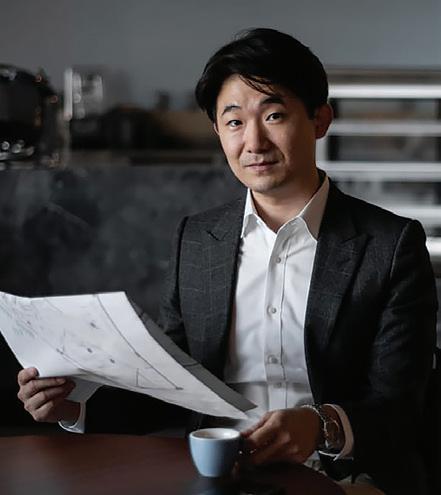
just opened Kraken, are championing the use of local seafood, leveraging the fact that we’re on a coastline. The movement is still in its early stages, but I’m encouraged to see more chefs consciously working to weave regional products into fine dining, not only for sustainability but also to give menus a unique sense of place.
What about the rising demand for personalisation across industries?
Today’s luxury is about exclusivity, and that has fuelled an appetite for rare and remarkable ingredients. Chefs are no longer satisfied with “good enough” – they want unique. A great example is the 540-day aged Hokkaido potato at Row on 45, where a natural process transforms starch into sugar, creating a flavour unlike anything else. Years ago, these products would have had no market in Dubai. Now, they define how top chefs differentiate themselves and how diners measure a restaurant’s ability to deliver worldclass, one-of-a-kind experiences.
How can these ideals insersect? Balancing sustainability and global
sourcing isn’t about choosing one over the other – it’s about context. The Gulf simply doesn’t have the climate to sustain certain ingredients, yet that limitation has become one of Dubai’s greatest strengths. Chefs here can build menus that highlight local oysters or desert-grown produce alongside rare imports like uni or Japanese melon. The real luxury lies in curation – knowing when to celebrate what’s nearby and when to surprise with something from across the world.
How does the growing regional F&B scene impact travel and tourism? It encourages visitors to extend their stays to experience more of the city’s restaurants. As one of the region’s leading F&B destinations, Dubai not only complements travellers’ existing plans but also attracts those who come specifically for new openings and chef collaborations. This growing culinary reputation further strengthens the city’s appeal as a global hub for culture and hospitality.
essentials
• Gifts for friends in the country I’m visiting, from Bateel dates to ‘Dubai chocolate’
• My laptop
• Keep things simple and organised
• Pack delicates in a separate pocket
• Keep toiletries in small tubes
• Put your laundry into its own bag
Bucket list
• Vietnam, Russia, and, hopefully one day, Palestine
Any favourite restaurants in the GCC? It’s tough to narrow it down, but a few underrated gems stand out: Manao –one of the best Thai restaurants I’ve been to, led by the talented Chef Abhi in partnership with Chef Orfali. BOCA – a pioneer in sustainability, founded by Omar, with innovative cuisine by Chef Patricia and an award-winning wine programme curated by Michelin Sommelier of the Year, Shiv. Al Naqa – Chef Joe’s unique take on blending Laotian, Thai, and Middle Eastern flavours into a truly memorable dining experience. They’re homegrown concepts that showcase incredible talent and deserve more attention.
Any destinations that really stand out for a foodie traveller to visit? Seoul, Tokyo, Bangkok, and Taipei.
What’s your earliest travel memory? When I was about three-and-a-half years old, we were living in Saudi Arabia and travelled to Korea during the 1988 Seoul Olympics. I remember looking up to see five jets streaking across the sky, drawing the Olympic rings. The image stayed with me so strongly that when we got home, I immediately tried to recreate it in a drawing for my mom, and then my grandfather took me to the Olympic stadium for a brief tour.

Business Traveller Middle East gives Maged Rizkalla, general manager of Mercure Khamis Mushait, five minutes to pitch his property to prospective guests
MERCURE KHAMIS MUSHAIT blends authentic Saudi hospitality with the rich cultural offerings of the Aseer region.
As the first internationally-branded property in Khamis Mushait, I am delighted to introduce a property managed by Saudi-born Amsa Hospitality, and infused with Mercure’s signature warmth.
Our hotel’s design incorporates locally-inspired elements, with thoughtfully-curated interiors across its public spaces and 93 rooms that pay tribute to the region’s cultural richness.
Located 25 km away from Abha International Airport, Mercure Khamis Mushait features an all-day dining restaurant, a lobby-level coffee shop, a gym, and an indoor swimming pool




CLOCKWISE FROM TOP LEFT: Maged Rizkalla; A room at the Mercure Khamis Mushait; The hotel’s indoor pool; A seating area with Saudiinspired colours; Outdoor dining
that is also temperature-controlled.
To make our guests’ stay even more comfortable, we also provide a variety of convenient services, such as 24/7 in-room dining, laundry services, valet parking, and several more.
Business guests can benefit from a business centre and a meeting room equipped with the newest audiovisual technology – ideal for boardroom or client meetings. Guests who enroll in ALL, Accor’s award-winning loyalty programme, gain access to a collection of benefits and exclusive offers throughout the year.
‘Mercure Khamis Mushait is the first internationallybranded property in this part of Saudi Arabia’
At Mercure Khamis Mushait, we take immense pride in bringing Mercure’s renowned hospitality to the Aseer region. Our dedicated team is committed to providing guests with a unique mix of local character and exceptional service, whether visiting for business or leisure.



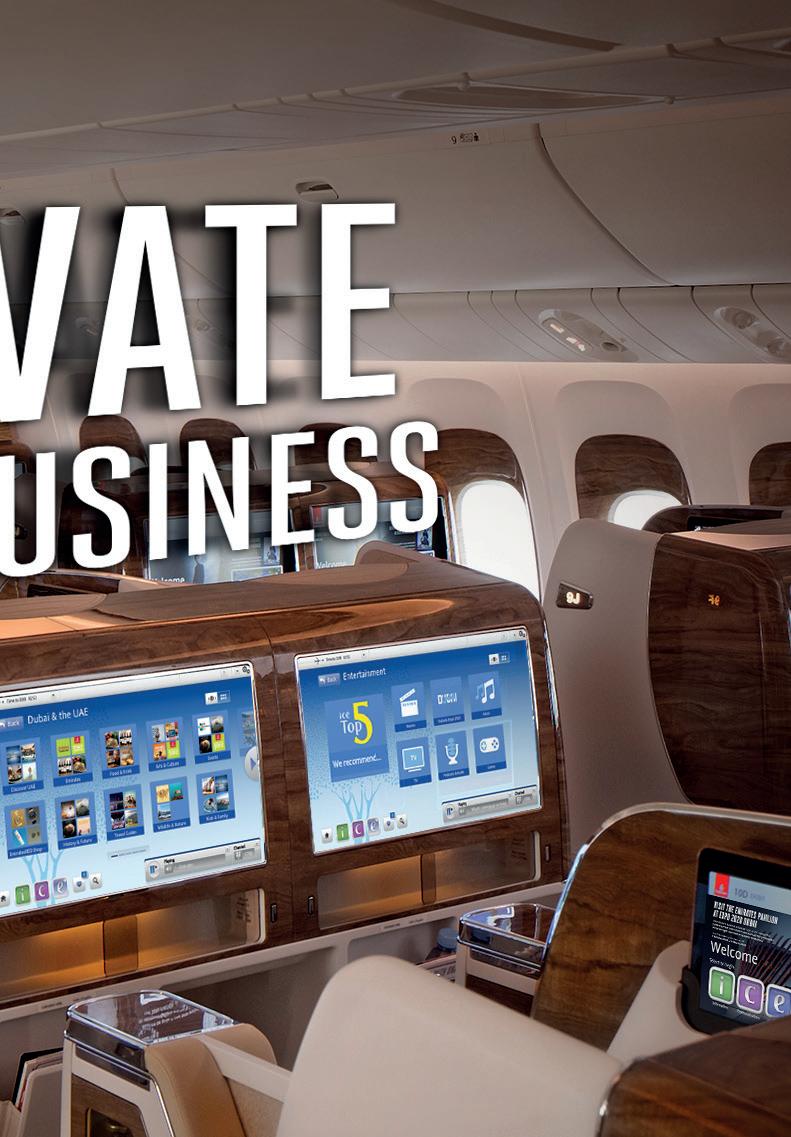


Attractions
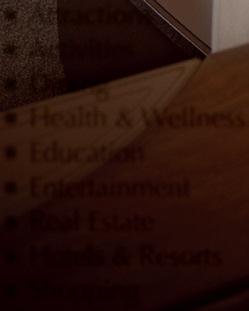


Activities
Dining
Health
Education
Entertainment
Real Estate
Hotels & Resorts
Shopping
The














Eat, drink, shop, relax
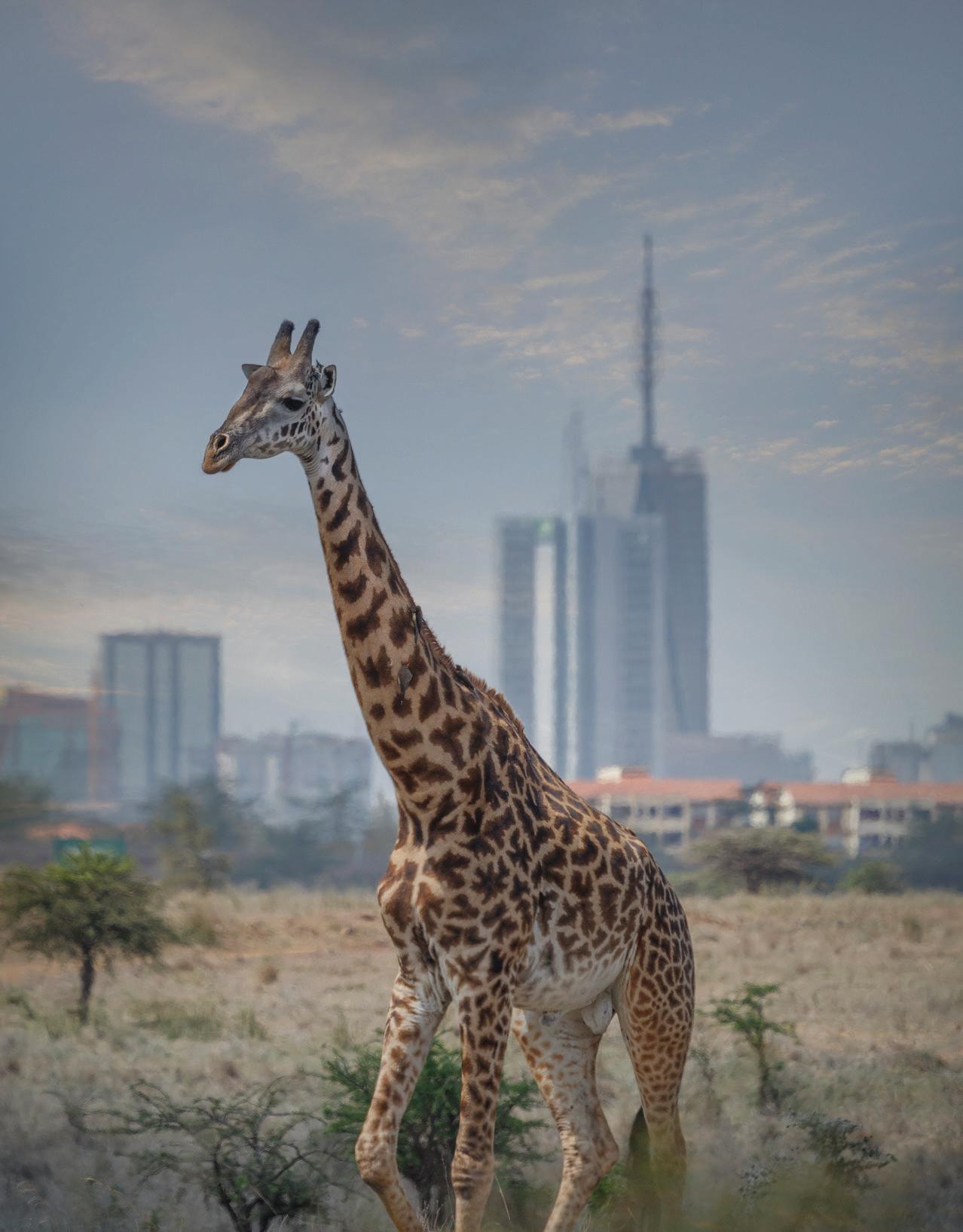
Skycrapers meet the savannah in one of Africa’s rising star destinations
KENYA’S CAPITAL, like its dynamic energy, is known by two nicknames: The Green City in the Sun, and the Safari Capital of the World. These are reflective of the city’s duality, as a place that balances nature and innovation like no other. From a stellar national park to impressive dining venues, cultural enclaves, and a thriving business scene, here’s how to make the most of an extra day in this East African powerhouse.

One of the most unique hotels in Kenya and the world at large, Giraffe Manor Hotel is a boutique property that has a resident herd of wild giraffes – and if you’re in Kenya’s capital city, it’s a truly spectacular way to start your day. At this property, you can have breakfast with giraffes, wherein the majestic beasts can pop their heads in through the windows in hopes of sharing a nibble, or being given a treat. The hotel is part of The Safari Collection, and is set within 12 acres of private land. In addition to its giraffes – which are of the once-endangered Nubian/Rothschild species of giraffe – it also has 140 acres of indigenous forest in the city’s Langata suburb. The hotel also participates in a breeding programme to help grow the number of these giraffes in the wild. The building has been around since the 1930s, and has twelve rooms. While the chance to breakfast with its giraffes is one of its most iconic experiences, the hotel has much more to offer, including lush gardens, and a retreat next door complete with a stunning pool, day rooms, and a wellness centre with massages and more. If you’d rather see more wildlife instead of relaxing at the spa, make Nairobi National Park your next stop. Nairobi is the only capital city in the world that
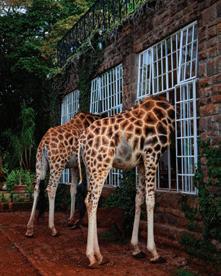
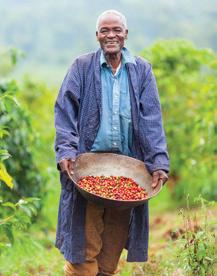
has a national park within its official boundaries, and despite its relatively small size compared to other national parks, this incredible spot just 10km from the city’s business district is chock full of jaw-dropping wildlife. The park is home to more than 100 species of mammal and 400 species of birds, and here, you could spot lions, leopards, buffalos, zebras, antelopes, and, of course, giraffes. It also has the world’s most dense concentration of black rhinos.
After your safari, fuel up with lunch at one of the many cool cafés and restaurants back in the city. Two of its most-loved suburbs are the Westlands and Karen, and in both, you’ll find plenty of places to try traditional food or tuck into international cuisine – and to enjoy some of the country’s famous coffee. Kenya has some of the best coffee in the world, beloved for its bright, fruity, and acidic profile. The

‘Nairobi is the only capital city in the world that has a national park within it’
INTRO PAGE: A giraffe with some of Nairobi’s city skyline in the background
TOP FROM LEFT: A Kenyan coffee grower; Zebras in Nairobi National Park
BOTTOM FROM LEFT: Giraffe Manor Hotel; The Carnivore Restaurant
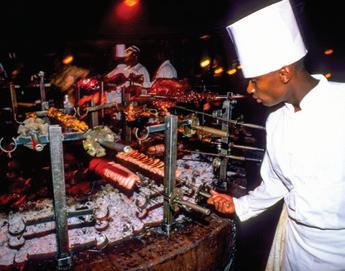
growth and production of coffee is one of the most significant contributors to Kenya’s economy, and the amount of its expanding global exports is expected to grow by another 10% within the next year – but that isn’t the country’s only power beverage. Kenya’s largest export is actually tea, followed by fresh cut flowers. It’s little surprise, then, that Nairobi has a great, and rapidly expanding, café culture. If you’d like some food while you recaffeinate, why not try some local dishes? Ugali (a maize flour porridge), Nyama Choma (grilled meat), Sukuma Wiki (collard greens), and Kuku Paka (chicken in coconut milk) are all strong picks. Where there is good café culture, a strong arts scene often follows, and Karen’s Opportunity Factory is a wonderful place in which to learn about as well as shop for products made by independent Kenyan artisans. Artisan Makers Market is another community-led choice, where you can also often enjoy live music while you shop.
Vegans, look away – but The Carnivore Restaurant, one of Nairobi’s most famous dining venues, is a must-try for meat-lovers, and it’s a spectacular experience for dinner. Here, you can enjoy an open-air meal in the lovely garden, or opt for all-youcan-eat grilled meats. It serves beef, lamb, pork, and chicken, along with farmed ostrich and crocodile meat that’s been skewerd on Maasai swords, cooked on coals, and served on cast iron plates – inspired by the Brazilian churrascaria Rodizio concept. They do have vegetarian options too. The venue has a nightclub on the premises, but the city has no shortage of nightlife, like rooftop bars that offer a view with your nightcap.
Kenya Airways, Emirates and flydubai all offer direct flights between Dubai and Nairobi. Etihad Airways flies there direct from Abu Dhabi, while SalamAir launched nonstop flights from Muscat to Nairobi earlier this year.

MADINAT JUMEIRAH’S TALISE SPA
has unveiled a new a selection of redlight therapy experiences, that offer guests science-backed treatments to enhance physical performance, restore internal balance, and empower one’s path to holistic well-being. The treatments centre around red and near-infrared light therapy, which the spa presents as being grounded in clinical research. It’s a tool that has been widely adopted across recovery, dermatology, and longevityfocused wellness disciplines in recent years. Benefits reportedly include cellular repair, a boost in collagen, inflammation reduction, enhanced circulation, and supported recovery. By penetrating the skin at varying depths, this light is said to stimulate biological processes that support the body’s natural ability to heal, regenerate, and rebalance.
The sessions are suitable for all levels of experience, including beginners to yoga, and during the cooler season, outdoor sunset sessions will also be made available. We tried it out shortly after landing from a recent trip, and instructor Kajal’s gentle movements were a great way to shake off any aches and stiffness from the flight. Our session, held in a beautiful private room, was followed by a soothing sound healing session using metal Tibetan and crystal bowls. It turned out to be a fantastic way to beat jet lag, and an aid for deep, restful sleep.
Price AED 250 per person in a group class; AED 550 for a private one-toone session; AED 700 per duo for a private two-person session
Duration 60 minutes
Launching this month, the new redlight therapy bed treatment will offer guests a full-body immersion in healing light to stimulate cellular regeneration, reduce muscle fatigue, and improve overall skin tone and elasticity. It is said to be ideal for post-training recovery or holistic rejuvenation.
Price AED 400 per session
Duration 30 minutes
LED Light Therapy Face Mask
Addressing fine lines, wrinkles, acne, dark spots, and more, this skincareboosting LED mask can be added to any body treatment at the spa. It is said to stimulate collagen production and improve circulation.

Presented as a first in Dubai, Talise Spa’s red light yoga sessions involve yoga practiced on a medical-grade red light mats, which are said to help to ease muscle tension, calm the nervous system, and support flexibility. As guests move through gentle, low-impact postures, the light should penetrate deep into the tissues, aiding recovery and promoting overall balance, with physical as well as emotional benefits.
Price AED 150 per session
Duration 15 minutes
Red Light Repair Therapy
This add-on treatment uses advanced LED technology to target aesthetic and recovery goals. Applied anywhere on the body – from the full face and chest to the back, knees, or other areas – it delivers restorative benefits wherever they’re needed. With three settings – Acne, Wrinkle Repair, and Pain Relief – guests can tailor their session to support clearer skin, smoother texture, or muscle and joint relief.
Price AED 150 per session
Duration 15 minutes
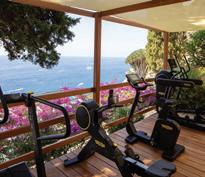
From 20-23 November, Anantara Convento di Amalfi Grand Hotel and Technogym are uniting for a wellness retreat at a restored 13th-century Capuchin monastery perched high above the Mediterranean. Themed around the ancient blessing Pace e Bene (peace and goodness) the programme combines Technogym’s science-driven performance training with Anantara’s soulful wellness rituals, with fitness checkups, movement sessions, breathwork and longevity workshops, a cooking class, and more.
IN A NEW MILESTONE for Qatar’s holistic wellness scene, the Rosewood Doha has launched the country’s first members-only social wellness club. Its name was inspired by the Sanskrit meaning “to set an intention for selfchange,” and the space aims to be a thoughtfully -designed destination rooted in transformation, community, and mindful living. It will blend ancient practices with modern science across five pillars: emotional well-being, physical movement, skin health, nutrition, and community connection. At Asaya, members (or hotel guests) can take workshops that foster shared growth, or begin a personalised journey involving AI-powered skin assessments, biohacking consultations,

and Technogym fitness evaluations. Experiences range from hydrotherapy and sound healing to advanced facials by Dr. Barbara Sturm, hammam rituals by marocMaroc, and various sleep and energy therapies. Within Asaya’s Social House, guests can also enjoy wellness-forward Mediterranean cuisine. The club will also feature fitness zones, a 25m lap pool, a hair salon and barber shop, a kids club, a padel court, and a retail store with exclusive collections of kimonos, padel apparel, and more.
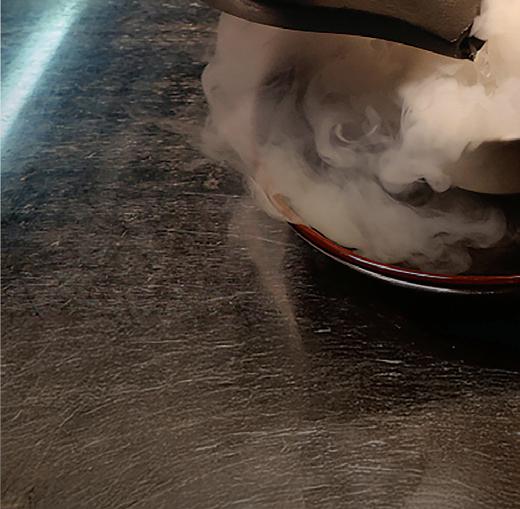

ONE OF THE MOST EXCITING events in the regional calendar for foodies and fine dining enthusiasts, the Michelin Guide Food Festival Abu Dhabi will be returning to the UAE capital this month, for its third edition. The event will take place from 21 to 23 November at Emirates Palace Mandarin Oriental, Abu Dhabi, where it will be held in partnership with Experience Abu Dhabi – the destination brand of the Department of Culture and Tourism - Abu Dhabi (DCT Abu Dhabi).
The event will bring together a series of renowned local and international chefs from 20 Michelin-recommended restaurants. Visitors can look forward to specially-curated
menus, exclusive limited-timeonly dishes, and engaging culinary masterclasses hosted by international and local chefs, as well as a vibrant marketplace that will feature items from local producers, plus much more.
Set within the grounds of the Emirates Palace Mandarin Oriental hotel, visitors have been promised something for every taste bud, age, or occasion. It will also feature entertainment in the form of live music, shows, and experiences for all ages. The daily programme will begin from 4pm onwards. Tickets cost AED 100 for general admission (kids under 12 go free), and can be booked online from the Michelin Guide website, or via Platinumlist.
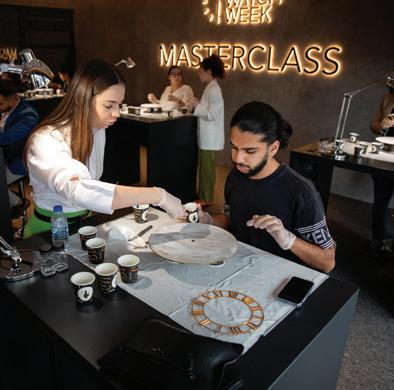

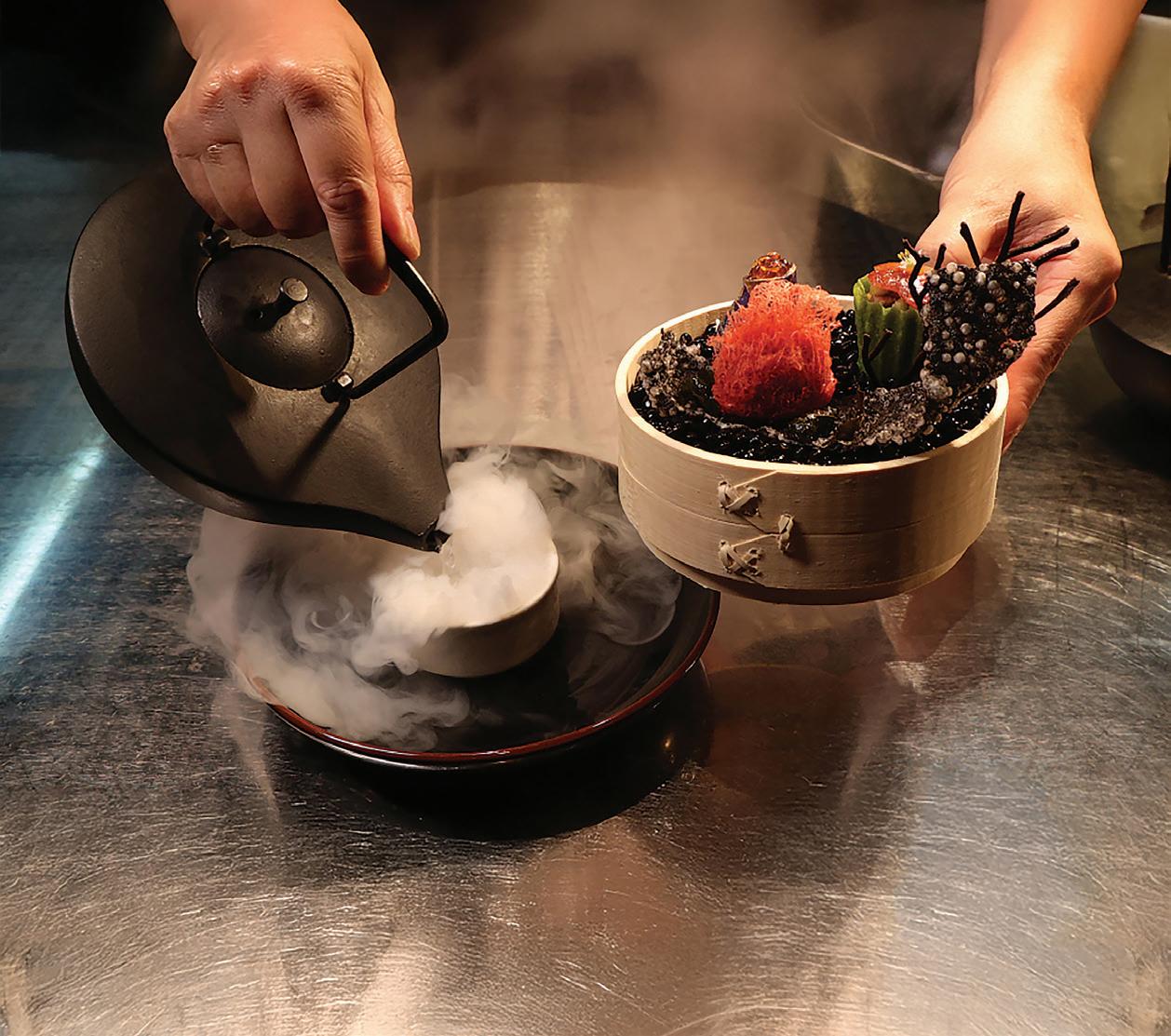
THE EXPERIENCE
The city’s foremost horological event will take place at Dubai Mall Burj Park this year, giving it more than 200,000 sq ft to accommodate the 90 renowned brands taking part. Held from 19-23 November, it will feature talks, interactive hands-on masterclasses (such as traditional dial hand-hammering or the decorative technique of martelé), plus the chance to explore rare and new collections and visit The Collector’s Lounge.
sustainable bags that help you pack smarter and look better
BORN IN THE UAE, Bailey & Jools is a woman-owned brand that makes some of the niftiest travel companions we’ve ever found. Its SplashSafe Travel Bags are made out of a unique, high-performance, lightweight, eco-conscious fabric that is extremely durable and leak-proof –making them the ultimate
pouch for spillable items going into your check-in luggage. Need to pack wet clothing before a flight, with no time for it to dry? Chuck it into one of these and rest easy knowing it’ll be safely kept apart from your other items. While the zippers and stitching do mean they’re not 100% waterproof, they are water-resistant – and



they’re a far more attractive (and sustainable) way to spruce up your travel gear. The company is known for its fun prints, and produces pouches of various sizes as well as tote bags – all of which can carry you from the gym to the jet bridge, or from the beaches to the boardrooms. Prices start from AED 89.







CRAVING THE ALLURE of the Amalfi coast? Find it at Il Gattopardo, a beautiful dining spot at DIFC’s ICD Brookfield Place that opened less than a year ago. Executive Chef Massimo Pasquarelli’s refined yet soulful cuisine can be savoured from noon until late in this Lázaro Rosa-Violándesigned space, which
offers cinematic elegance through dark woods and Venetian fabrics. On weekdays from 12-3pm, a three-course business lunch menu is available at AED 155 per person, featuring tender meats and juicy seafood, handmade pastas drenched in lush sauces, and sweet treats worthy of Italy’s golden era.
Price upon request Commemorative Treasures
Swiss watchmaker Hublot recently celebrated the 75th anniversary of its regional partner, Ahmed Seddiqi, with two specialedition timepieces: the Classic Fusion Titanium Diamonds Seddiqi 75th Anniversary and Classic Fusion Titanium Seddiqi 75th Anniversary. The movement of both watches – which feature Eastern Arabic numerals – runs counter-clockwise, as a nod to Arabic culture.













S TRAVELLERS GROW more conscious of their environmental impact, hotels can no longer afford to treat “green” practices as optional extras. In the quest to achieve greater sustainability across the industry, from construction and energy use to sourcing and waste management, every stage of a property’s operation is increasingly




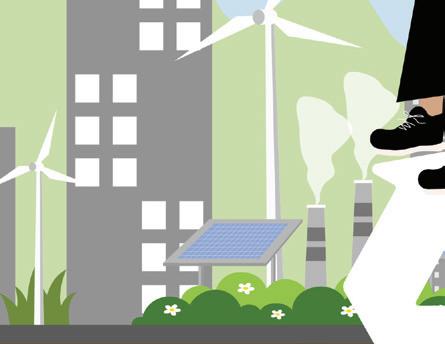

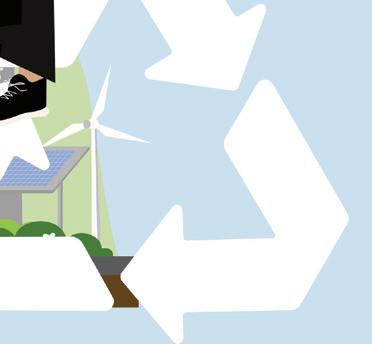
Aunder scrutiny. Yet with the rise in eco-labels and pledges, accountability has become just as vital as ambition. That’s where certification comes in. A number of key frameworks used across the world are helping brands and customers to distinguish genuine progress and effort from performative promises – from Green Key, which focuses on operational sustainability; and Green Globe, which measures continuous improvement; to LEED, which assesses the environmental
performance of building design; EarthCheck, known for its scientific benchmarking; and in the UAE, Dubai Tourism very own award system, which aligns with the emirate’s Net Zero 2050 Strategy.
The selection of eco-friendly, sustainabilityfocused hotels in the Middle East continues to grow, redefining what responsible luxury can look like as they set new standards for the region’s hospitality sector. We take a look at some of the properties raising the bar.


This eco-resort in Oman is certified by Control Union under the Global Sustainable Tourism Council (GSTC) standard. Its sustainability efforts follow two tracks, both inside and outside the resort. On-site, it tracks hundreds of thousands of plastic bottles avoided and tonnes of waste composted, channels 0.5% of revenue into a Sustainability Fund, and maintains an “Earth Lab” for guest engagement. It has also created a marine protected area on the Musandam peninsula.
This buzzy, community-led hotel in the heart of Dubai Media City holds Green Key Certification as well as the Dubai Sustainable Tourism Stamp. It has Tesla charging stations in its parking lot to support electric vehicles, and it has committed to reducing its carbon footprint by 20% and its waste by 8%. Recently, it achieved a 10% reduction in water and energy use, a 35% cut in overall waste, elimination of single-use plastics, and it has a food-waste partnership with The Waste Lab. It also partners with Neutral Fuels to locally convert its cooking oil into 100% biofuel.
This hotel recently snagged Green Key certification for its eighth year, and in addition to in-house glass bottling, and a holistic approach to waste management that includes the recycling of plastic, cans, cartons, and used cooking oil, it also collaborates with the UAE Food Bank to donate surplus buffet food, reducing food waste while helping support those in need. The Dubai-based hotel is part of Marriott International, which had eight of its hotels recognised with Green Key certification the year before, including: W Dubai – Mina Seyahi, The Westin Dubai Mina Seyahi Beach Resort & Marina, Le Méridien Mina Seyahi Beach Resort & Waterpark, Le Méridien Dubai Hotel & Conference Centre, Aloft Dubai Airport, Aloft Al Mina, Element Dubai Airport, and Element Al Mina.
Atlantis The Palm and its Aquaventure World have achieved EarthCheck Gold, while Atlantis The Royal holds EarthCheck Silver. The EarthCheck system requires an organisation to progress through tiered levels of Bronze, Silver, then Gold to reach each next stage, making Silver the maximum level Atlantis The Royal could achieve since its opening, as it works its way towards Gold in the near future. Both Atlantis Dubai properties are part of the Atlantis Atlas Project. To learn more about the project, read our exclusive interview on p.15!
Business Bay-based Hyde Dubai achieved Green Key Certification in November 2024, citing energy-efficient systems, wastereduction programmes and a 100% cut in single-use plastic. It has incorporated Solar Thermal installations and waste reduction programmes that have significantly minimised its ecological footprint, and the hotel actively participated in the Global Climate Change Conference at Dubai Expo City, offering low carbon emission menus and plastic-free packaging through its 1.5 Menu.
Red Sea Global (RSG) is known for its pioneering approach to regenerative tourism, which applies to its destinations as well as its hotels. RSG has claimed multiple LEED certifications (including Platinum) across its properties at The Red Sea destination, and its owned-and-operated resorts in Saudi, Desert Rock and Shebara, are both eco-friendly from the ground up. The two resorts incorporate unique, low-impact architecture with the use of locally-sourced materials, while using passive cooling methods, solar power, and a commitment to preserve their surrounding nature, leaving a minimal environmental footprint while supporting RSG’s regenerative tourism efforts.
Like its sister properties, Jumeirah Dar Al Masyaf and Jumeirah Al Naseem, this hotel supports local sourcing, along with the Dubai Turtle Rehabilitation Project. These properties hold the highest tier of the Dubai Sustainable Tourism Stamp. Around 80% of Jumeirah Al Qasr’s food ingredients come from the region and it uses sustainable seafood in some of its restaurants. The hotel has implemented energy-efficiency measures, including LED lighting and smart kitchen ventilation controls, cutting annual emissions by approximately 182,770 lbs per year. In the UAE capital, Jumeirah Saadiyat Island Resort is another outstanding eco-friendly property that holds Blue Flag certification for its beach, which contains protected, conservation-led areas for local Hawksbill sea turtle habitats.
This property on Bluewaters Island holds Green Key certification, as well as Forbes Travel Guide’s Responsible Hospitality Verified status. From water purification with Nordaq, and use of CoffeeB’s fully-recyclable coffee pod balls, it hand-picks partners that can support its sustainability journey, and in 2023, it introduced innovative pencils to each guest room, embedded with tomato and basil seeds, that can be planted by guests later.
9 GROSVENOR HOUSE, A LUXURY
At this marquee property from Marriott’s Luxury Collection, sustainability is validated through Green Globe Certification issued in November 2024. It uses energy-efficient LED lighting systems, has partnered with Winnow for food waste (for which it has achieved a 72% reduction), and showcases upcycled art along with a dedicated Green Corner that helps to educate and inform visitors.
This hotel has held Green Key certification since October 2024. In addition to its water-efficient fixtures and droughtresistant landscaping, its restaurants use as many locally-sourced ingredients as possible –a significant impact considering its prominent F&B offering. Its nose-to-tail restaurant, Carna, has a zero-waste philosophy, and through innovative approaches to its menus, plus carbon emission tracking through Fresh On Table, has made significant savings within its CO2 emissions and food mileage.
11
ANANTARA MINA RAS AL KHAIMAH
Bringing Maldivian overwater villa life to Ras Al Khaimah, Anantara Mina Al Arab holds LEED Gold building certification, uses an onsite water bottling plant, phased out single-use plastics, and integrates grey-water recycling for its landscaped grounds.The resort was constructed to preserve the surrounding environment, including the delicate mangrove ecoystem that surrounds it.
12
JA THE RESORT
JA Resorts & Hotels has eliminated millions of single-use plastic bottles via an on-site water treatment and refill system across its Dubai properties. At its familyfriendly Jebel Ali resort, which holds Green Globe certification, solar panels are used for heating, a reverse osmosis plant is used for desalination, and on-site bio-gardens provide fresh produce for its restaurants.
13
SOFITEL THE OBELISK
This landmark hotel achieved Green Key certification in 2023 as well as the Gold Tier of the Dubai Sustainable Tourism Stamp, with initiatives including a 37% energyreduction target, a composting partnership with Reloop, linen donation through the Dubai Center for Special Needs, plus food donation through the UAE Food Bank.
14
ROSEWOOD ABU DHABI
This pioneering Global Sustainable Tourism Council (GSTC) and LEED-certified hotel has an in-house waste digester, plus Abu Dhabi’s first circular water bottling plant.
GUL, A FORMER FULBRIGHT SCHOLAR and Lead for Digital Transformation at the World Economic Forum, charts the rise of new global innovation hubs beyond Silicon Valley. Using a blend of sharp analysis and thoroughlyresearched case studies, he deftly highlights
how shifting economic power and technological ecosystems are reshaping industries across the US, China, UK, Singapore, Germany, and even Canada. It’s a smart, accessiblywritten read for anyone anticipating the next wave of transformative ideas.
AED65.35; amazon.ae

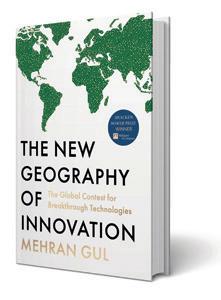
THIS AWARD-WINNING PODCAST was recently listed as one of Time Magazine’s “Top 100 Podcasts of All Time” for good reason. In it, science communicator Alie Ward skilfully distills discussions about complex subjects into hilarious and heartfelt conversations. From volcanology to mycology, each episode dives into a different “-ology” with an enthusiasm reminiscent of The Magic School Bus Available on Spotify.
From the creators of the American remake of The Of ce comes a new show set in the same universe. This time, the mockumentary lens zooms in on a struggling local newspaper in Toledo, Ohio. Featuring a mix of old and new faces (including Star Wars’ Domhnall Gleeson and Taskmaster’s Tim Key) this charming sitcom blends journalistic heart with a sharp re ection on the industry at large.
OUR PICK OF EVENTS TAKING PLACE AROUND THE WORLD

Loy Krathong, Thailand 5-6 November
This annual celebration symbolising renewal and good fortune sees thousands of glowing lanterns released into the sky and rivers as locals across The Land of Smiles thank the River Goddess Ganga. Rooted in centuries-old tradition, the festivities transform cities like Chiang Mai into luminous dreamscapes. Perfect for anyone seeking a moment of quiet awe amid collective celebration.

SHINE Mural Festival, St. Petersburg, Florida , USA 7-16 November
More than 20 local and international mural artists are set to descend onto this Florida city’s streets for the 11th edition of this celebration of creativity and community. The creation of vibrant large-scale murals across the city effectively transforms it into a massive open-air gallery. Interested visitors can follow self-guided walking tours, meet the artists, and participate in live events.



Mr Vegas Grand Slam of Darts, Wolverhampton, England 8-16 November
One of the sport’s most entertaining tournaments, this days-long competition will see 32 of the world’s best darts players battle it out across group and knockout stages for a juicy pot of £650,000 in prize money. Known for its passionate crowds and dramatic finishes, it’s the perfect showcase for top-level darts throwing competition.

Crypto is no longer just about wealth, it’s about connection. Ahead of Binance Blockchain Week, Binance’s chief marketing officer Rachel Conlan explores its evolution from a digital asset to a global cultural force reshaping how how we can live, create, and connect
ONCE PERCEIVED AS a numbers-led domain that belonged mostly to early adopters and digital speculators, crypto has evolved far beyond the confines of finance. Today, it represents a cultural movement –one rooted in participation, decentralisation, and a new kind of ownership that is reshaping how people around the world interact, create, and exchange value, Conlan explains. At its core, crypto isn’t just about buying or selling tokens. It’s about belonging to an ecosystem built on shared ideals of financial freedom and transparency. Its users aren’t simply investing; they’re joining communities, supporting creators, and helping to build a more inclusive future. With crypto, invidiuals can reimagine how they connect and collaborate in an increasingly decentralised world. It empowers them to move from transactions to transformation, and from ownership to belonging.
For Binance, crypto’s transformation must centre around amplifying the people and stories driving that evolution. This philosophy is brought to life through initiatives such as Humans of Binance: a global campaign spotlighting the authentic stories of individuals whose lives have been empowered by crypto. From small business owners using blockchain to access fairer markets, to creators finding new ways to monetise their work, the stories reflect a collective shift – one that prioritises empowerment and human connection.
Crypto’s rise, as seen through this cultural lens, is less about technological disruption and more about social transformation. The growing momentum behind blockchain represents a generational rethinking of trust. People no longer want to simply transact, Conlan says – they also want to participate. They want to be part of the process, to shape the systems they engage with, and to feel heard. Trust, in this new era, is built not through fleeting promotions or hype cycles, but through inclusion. Rather than seeing users just as customers, crypto communities are increasingly recognising them as collaborators that are integral to both innovation and accountability. This is the foundation upon which Binance has

continued to build: by engaging people through meaningful experiences that invite them to learn, grow, network, and contribute to a rapidly evolving landscape.
This energy will take centre stage later this year, as Binance Blockchain Week returns to Dubai. Taking place from 3-4 December at Coca-Cola Arena, this global flagship conference is expected to bring together thousands of attendees from around the world for two days of dialogue, discovery, and innovation. Now in its seventh edition –and back in Dubai for the second consecutive year – it stands as the pinnacle of Binance’s 1,500+ global events. The conference serves both as a gathering for industry insiders as well as a bridge between regulators, thought leaders, and everyday users who are all shaping the future of blockchain together.
Following last year’s success – wherein 5,000 attendees from 126 countries attended, and the event was featured in Building the Future: Inside Binance Blockchain Week , a documentary listed on Amazon Prime Video – the 2025 edition aims to raise the bar even higher. Over the course of two days, key figures from Binance will take to the stage alongside global voices from across the crypto and tech landscape – including Conlan herself, as well as Binance CEO Richard Teng; chief compliance officer Noah Perlman; vice president of product Jeff Li; regional growth and operations lead for MEASAT Bader Kalooti; and Stephanie Emile, general manager for Dubai. Together, they’ll explore themes ranging from decentralisation and user empowerment to the evolving role of blockchain in governance, culture, and the creative economy, and beyond.
This year’s event will also underscore Dubai’s growing status as one of the world’s foremost hubs for Web3 innovation and blockchain enterprise and advancement, with a thriving ecosystem extending far beyond the financial sector. The city has positioned itself at the crossroads of innovation, reflecting a broader regional evolution driven by a vision for digital transformation that extends beyond finance. For new users, the conference will provide an accessible entry point into the world of crypto and blockchain technology. For experts, it’s a rare opportunity to exchange insights, forge collaborations, and discuss the next wave of developments shaping the industry. It will be, at once, a celebration and a platform designed to amplify ideas and highlight the people and projects redefining how the world engages with Web3. This December, Binance Blockchain Week will be more than a mere industry summit, but a cultural moment where the future of finance isn’t just being built – it will be lived, together.




Dubai Airshow’s 19th edition – taking place this November at Dubai World Central – will unite the world’s aviation leaders to chart the future of ight
















is a term that’s something of a mantra for pilots. What does it mean? Put simply, these are three of the key pillars pilots must operate by, in that order. It’s a foundational principle that guides them, during times of stress as well as at all other times. In the case of an emergency situation, for instance, their rst priority is to keep the aircraft ying and under control. Once that’s handled, the next step is to determine where exactly they are in that moment and where they need to go next, before they address the third step, which is to communicate the status with others – from air traf c control to the crew and then passengers. One could also argue that, with these pillars approached in reverse, it could also be a foundational philosophy for the region’s aviation industry – which has been working hard to strategise where the future of ying (and related transport) is headed; how high it can soar; and how to implement its evolution as ef ciently and excellently as possible. And now, as the highly-anticipated Dubai Airshow returns for its 19th edition, it’s time for us to learn what promises the future of ying can hold.


OPPOSITE PAGE
Aermacchi
MB-339 trainer aircraft of the Fursan al-Emarat (UAE Knights) aerobatics team release smoke as they fly over during the 2023 Dubai Airshow

The Dubai Airshow has been running in some form or another since 1986, when it rst began as a small civil aviation show called Arab Air. Run by Tarsus F&E LLC Middle East and held at the Dubai World Trade Centre – which was, at the time, less than a decade old itself – it had just 200 exhibitors and 25 aircraft. By 1989, it had been rebranded as the Dubai Airshow, and while it hadn’t yet grown in size (the 1989 show featured the same number of exhibitors and aircraft as its rst edition), it had moved premises to Dubai International Airport (DXB). Back then, the show was held during the early months of the year – but by 1991, with the outbreak of the Gulf War, it was moved to November, with a strong focus on military aircraft, given the climate at the time. During the following years, the show grew, expanding through the increasing presence of
ABOVE
A fighter jet at a previous edition of the Dubai Airshow
BELOW An Emirates Airbus aircraft at a previous edition of the Dubai Airshow



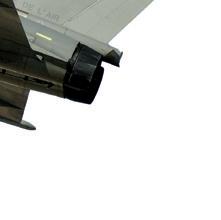
commercial regional airlines, and more exhibitors, from more countries. By 2003, the show had experienced its fastest-selling edition in the event’s history, with 500 companies from 36 countries. As it prepares for its next edition, to be held from 17 to 21 November this year, it is anticipating more than 1,500 exhibitors from over 47 countries. The current show organiser, Informa Markets, expects the 2025 event – held under the patronage of Sheikh Mohammed bin Rashid Al Maktoum and in cooperation with Dubai Civil Aviation Authority, Dubai Airports, and the UAE Armed Forces – to draw in more than 148,000 visitors, and of cial delegations from 98 countries.

It’s a grand legacy, and one that has earned the biennial show a reputation as the leading global platform for the aviation, aerospace, and defence industries to share insights, showcase cutting-edge technology, foster international collaboration, spearhead future developments, nurture future talent, and drive business growth. This year’s show is a particularly pivotal one, with a signi cant number of exciting changes in the region’s aviation and aerospace industries underway since its last edition in 2023. Where the 2021 edition focused on recovery and reconnection following the COVID-19 pandemic, the 2023 edition focused on the future of the impending aerospace industry. This year’s theme is that “the future is here” –and indeed it is, with multiple groundbreaking, progressive innovations already starting to make their way into the world.
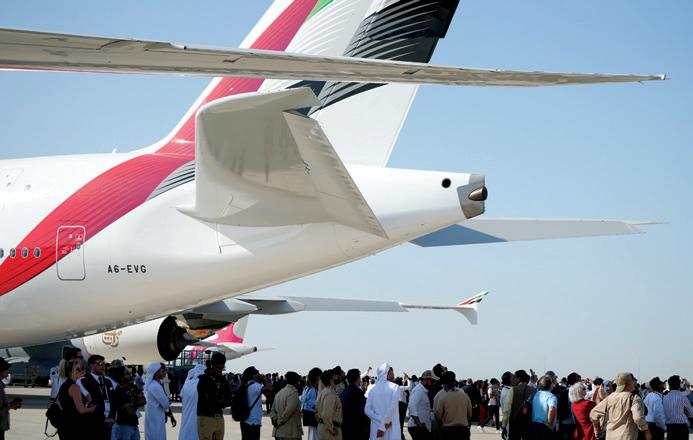
A key aspect of this year’s show is the debut of eVTOL aircraft – those utilising electric vertical takeoff and landing – in its iconic ying displays. Dubai is set to launch its rst-ever commercial ying taxi service in 2026, which will make it the rst city in the world to launch a commercial air taxi service. A partnership between Dubai’s Roads and Transport Authority, UK-based Skyports, and US-based Joby Aviation has been making solid progress on the creation of the Dubai Vertiport Network, following which Joby Aviation will have six years of rights to supply, operate, and maintain eVTOLs for air taxi services in the emirate. The service will begin with four vertiports, located at Dubai International Airport, Palm Jumeirah, Dubai Mall, and the American University of Dubai. The rst vertiport is planned to be able to handle 170,000 passengers annually, and each aircraft – which will be fully electric and piloted, not autonomous (at least to begin with) – will be able to carry four passengers, their luggage, and a pilot, at a top speed of 300km/h. The aircraft are said to be 100 times quieter than helicopters, although their pricing may start at comparable rates to a helicopter ride at rst. Over time, the goal is to make them as


affordable as other popular ride-hailing services, such as Uber and Careem. Joby Aviation has also been awarded a contract to operate the first flying taxi services in Ras Al Khaimah – which, once established, will be able to connect passengers between Dubai and the northern emirate within less than 15 minutes. Last month, Chinese flying car maker Aridge – formerly known as Xpeng Aeroht – conducted its first manned flight in Dubai, and announced that it had already secured bulk orders of 600 units from GCC buyers, on top of its 7,000 global pre-orders.
Within the world of more traditional commercial aircraft, the recent launch of Riyadh Air – Saudi Arabia’s new national carrier, that proffers to be a digitally-native airline rewriting the playbook on the guest experience from the ground up – is no doubt set to create buzz at the Dubai Airshow 2025. Other hot topics for this year include the UAE’s growing position as a global
ABOVE
The Space Pavilion at the Dubai Airshow 2025 will be its largest-ever, organised in partnership with the UAE Space Agency
“Dubai Airshow 2025 will bring space exploration to life for audiences”
MRO hub; the role of global incubators and accelerators in travel and aerospace startups; workforce development across the industry; strategies for greater global connectivity and visionary partnerships; building resilient businesses and navigating the future amidst modern challenges such as the current global political landscape, climate change, and beyond; the next big tech leap; female-powered flight; and even moon exploration.
(Inter)stellar ambitions
It’s impossible to talk about the future of flight without the consideration of spaceflight – and it’s a major focus for this year’s Dubai Airshow too. The 2025 edition of the event will be showcasing its largest-ever Space Pavilion, organised in partnership with the UAE Space Agency, which is one of the Airshow’s strategic partners. This year’s show will include a landmark five-day space programme that unites international space agencies, pioneering space-tech companies, startups, investors, and academia to address challenges, foster collaboration, and advance the commercialisation of space technologies. Within the programme is a two-day Space Conference that will bring more than 50 global experts, astronauts and industry leaders to the event’s Aerospace 2050 Stage. There, on 17 and 18 November, the conference will explore responsible space use, cutting-edge technologies, future exploration missions, downstream applications that impact daily life, and the emerging investment priorities shaping the space economy. Dave Limp, CEO of Blue Origin, will be part of the line-up, as he joins a fireside chat to discuss the future of commercial space exploration and how it can also benefit Earth. Also within the Space Conference’s exceptional roster of global leaders and experts is Juan Andres Caro, Deputy Assistant Secretary for International and Space Affairs, National Oceanic and Atmospheric Administration, U.S. Department of Commerce; Mariel Borowitz, Director of International SSA Engagement, Office of Space Commerce, National Oceanic and Space Administration, U.S. Department of Commerce; Chris White-Horne, Deputy CEO, UK Space Agency; Jonathan Hung, Executive Director, Singapore’s Office for Space Technology & Industry; Dr. Mohamed Al-Aseeri, CEO, Bahrain Space Agency; Teodoro Valente, President, Italian Space Agency; Dr. Saoud Al Shoaili, Head of the National Space Program, Ministry of Transport, Communications and Information Technology, Oman; Giorgio Tumino, Space Transportation Chief Technical Advisor, European Space Agency (ESA); and Luca del Monte, Head of the Commercialisation Department, ESA.
Beyond the conference, the Dubai Airshow 2025 will also bring space exploration to life for audiences through interactive features. Astronaut Encounters featuring Dr. Sian Leo Proctor and Claude Nicollier will inspire and engage with the wider audience through talks, student sessions, and SkyView meetand-greets. Integration with the Vista startup platform will also connect space entrepreneurs with investors through pitch competitions, and mentorship and networking opportunities. Another highlight will be OrbitX: Agile Space Systems Challenge, launched in partnership with FADA and EDGE Group, which invites startups to pioneer the next generation of micro-satellite systems and orbital networking architectures built for speed, adaptability, and real-time impact.
This focus on entrepreneurship is further reinforced by the UAE’s vision for a Space Economic Zone, a dedicated ecosystem designed to attract global space companies, foster entrepreneurship, and accelerate investment into commercial space ventures. Youth engagement will also be in the spotlight with the NextGen Leaders programme and Youth Circles, hosted
in collaboration with the Federal Youth Authority, inspiring young talent to pursue careers in science, technology, and space innovation. This year’s show aims to be a catalyst for showcasing scientific and technological advancements, global partnerships, and workforce development, creating opportunities for startups, space agencies,and space entities. Confirmed participants include the UAE Space Agency, Mohammed Bin Rashid Space Centre (MBRSC), Space42, FADA, TII, Airbus, Thales Alenia Space, Starlink, ST Engineering, ICEYE, Innospace, Eutelsat OneWeb, VAST, BlackSky and Neo Space Group, alongside experts from international agencies such as the European Space Agency, UK Space Agency, Italian Space Agency, CNES, Saudi Space Agency, Bahrain Space Agency and the Office for Space Technology & Industry in Singapore.
With the global space economy projected to exceed US$1 trillion by 2040, it makes sense that the UAE’s space ambitions are more than sky-high. The Middle East and Africa spacetech market is forecast to grow at a compound annual growth rate of 9.1% through 2030, with the UAE driving much of the region’s momentum through past and upcoming space projects including the Emirates Mission to the Asteroid Belt and the development of the constellation of Synthetic Aperture Radar (SAR) satellites. “We remain committed to shaping the future of international space collaboration, ensuring our space sector remains inclusive, innovative and interconnected,” said His Excellency Dr. Ahmad Belhoul Al Falasi, Minister of Sport and Chairman of the UAE Space Agency.
H.E. Ali Al Hashemi, Chairman of the Global Satellite Operator’s Association, CEO of Space Services at Space42, and member of the board of the UAE Space Agency added: “The UAE’s space ambitions are built on a foundation of collaboration and shared purpose. As we work to establish our nation as a global hub for space innovation, fostering partnerships that translate technological capability into real-world impact becomes essential to our progress. Space42’s capabilities in AI-powered satellite communications and geospatial intelligence are part of this collective effort, contributing to the infrastructure and expertise that will strengthen the UAE’s position in the evolving global space economy.”
A quote attributed to Ancient Greek philosopher Socrates says: “Man must rise above the Earth – to the top of the atmosphere and beyond – for only thus will he fully understand the world in which he lives” – and with platforms such as this leading the way, the future of flight is certainly looking bright. “Dubai Airshow 2025 represents a pivotal platform for international collaboration in space. By bringing together leading agencies, companies and innovators, we are strengthening the UAE’s role as a global hub for space exploration and commercialisation. This reflects our National Space Strategy 2030 and our ambition to advance technologies that address real-world challenges on Earth and beyond,” said H.E. Salem Al Qubaisi, Director General of the UAE Space Agency.
As Paul Griffiths, CEO of Dubai Airports, put it: “The Dubai Airshow is where the aviation and aerospace world doesn’t just gather, it lifts off. It’s a convergence of ambition, imagination, and progress, where the future of flight is shaped through conversation and collaboration.”
BELOW India’s Sarang Helicopter team at a previous edition of the Dubai Airshow
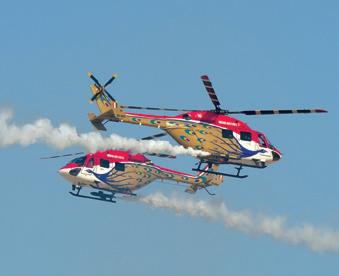

As a famous quote proclaims: “When once you have tasted flight, you will forever walk the earth with your eyes turned skyward, for there you have been, and there you will always long to return.”
While the Dubai Airshow is not open to the general public – as a business trade show, its exhibitor-led floors and its conference agenda of seminars and learning experiences are only open to industry professionals – aviation aficionados can still get involved by attending its Skyview segment.
At this open-to-thepublic, family-friendly experience, visitors will be able to enjoy prime views of flying displays and spectacular aerial demonstrations and flyovers from commercial jets, military aircraft, and more – including the UAE’s Al Fursan aerobatic team – from the grandstand, throughout all five days of the Dubai Airshow.
Other highlights include workshops that offer a hands-on chance to build rockets, or the opportunity to learn how to train like an astronaut with One Giant Leap ME, as well as a live theatre,
where guests can enjoy a performance of Around the World in 80 Days – a thrilling story of science, aviation, engineering, and sustainability brought to life by actors from the UK. For people looking to meet some of their high-flying heroes, the event will also offer activations around inspiring women in aviation, along with chances to meet pilots and astronauts.
The event will be supported with some of the UAE’s best food trucks, live music, and a VIP lounge, making it a comfortable place to enjoy a full day (or more).
Entry is open to visitors of all ages, although children under 16 must be accompanied by an adult. Open from 17 to 21 November from 10am to 6pm – except on Tuesday 18 September, when the event will run until 9pm – tickets can be purchased online via the Virgin Megastore website, at AED30 for a standard ticket or AED60 for a VIP ticket. Further information about the Skyview programme – including the timings of each activation – can also be found on the Virgin Megastore ticketing website.

LOW-EMISSION AVIATION FUELS AND ELECTRIC AIRCRAFT ARE BEING DEVELOPED — BUT IS A GREEN INDUSTRY TRULY ACHIEVABLE?

ilots at the small Truckee Tahoe Airport in California have a unique proposition when they fuel up their planes. The only option on offer is low-emission sustainable aviation fuel, or SAF. “We’re the only airport in the world to do that,” said Jeff Menasco, the airport’s director of aviation, in a video posted in January. Offering solely SAF is no small feat, even at a tiny general aviation airport such as Truckee Tahoe. The low-emission fuels made from elements like used cooking oil or leftover biomass are widely seen as the most feasible way to quickly decarbonise aviation. It’s just that they are extremely scarce.
Airline industry trade group IATA estimates that last year only 343 million gallons of SAF was produced globally, or just 0.3% of jet fuel production. And while output doubled from 2023, it wasn’t as much as IATA expected.
“SAF volumes are increasing but disappointingly slowly,” said IATA director general Willie Walsh in December. That was before President Trump, with his pro-fossil fuel policies, took office in the US. The administration has yet to outline a policy on SAF.
And when there is scarce supply and strong demand, prices are high. At Truckee Tahoe Airport, a gallon of SAF blend –30% sustainable fuel mixed with 70% Jet A – is at least US$7.22 per gallon. The average price of commercial jet fuel in the US stood at approximately US$2 a gallon in early March, according to Argus data from trade group Airlines for America.
None of this is good news for global airlines that hope to achieve net-zero carbon emissions by the middle of the century. Other technologies, such as electric planes or hydrogen fuel cells, either do not have the energy density – the amount of energy stored in a given space – or are too far from maturity to meet the industry’s timeline. That leaves SAF, which can be used in planes today, as the best option to significantly cut emissions soon.
SAF, by definition, produces half the emissions of traditional jet fuel and often far less. Most of the fuels produced in Europe and the US generate at least 80% fewer emissions.
They are not a panacea, however. SAF derived from palm oil, for example, can cause deforestation. And there are wellplaced concerns that increased SAF production could pressure global food supplies.
“I can’t take any of this SAF stuff seriously,” said David Neeleman, CEO of Breeze Airways and founder of JetBlue, at
FROM ABOVE: Emirates operated an A380 using 100% SAF in 2023; Archer Aviation Midnight eVTOL aircraft
OPENING SPREAD: Archer Aviation Midnight
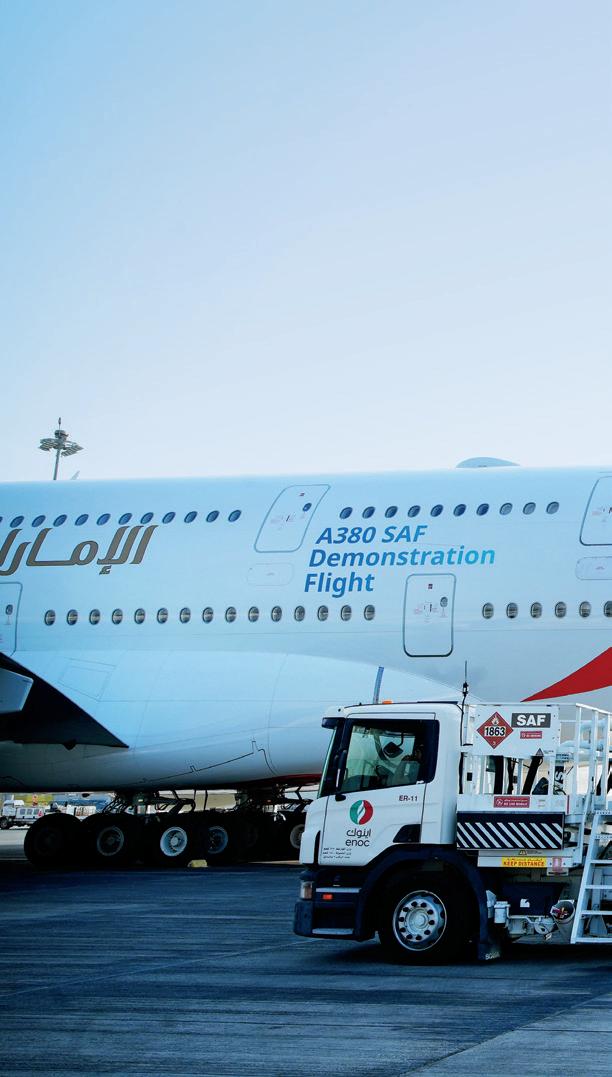
the World Aviation Festival in October 2024. An outspoken critic of sustainable fuels, he argued that the money being spent on the development of SAF could be better used decarbonising other segments of transportation. Aviation is widely acknowledged as contributing approximately 2% of global carbon emissions, and transport as a whole around 20%.

To the IATA boss, who joined Neeleman on stage at the World Aviation Festival, the criticism was too much. “If you want to stand up and say, ‘I’m not going to do anything to address my environmental footprint,’ I wish you well,” Walsh said. “As an industry, we have to recognise that there is a global movement to address environmental performance, and we have to play our part in that,” he added. Henry Harteveldt, president of Atmosphere Research Group who moderated the panel at the World Aviation Festival, said
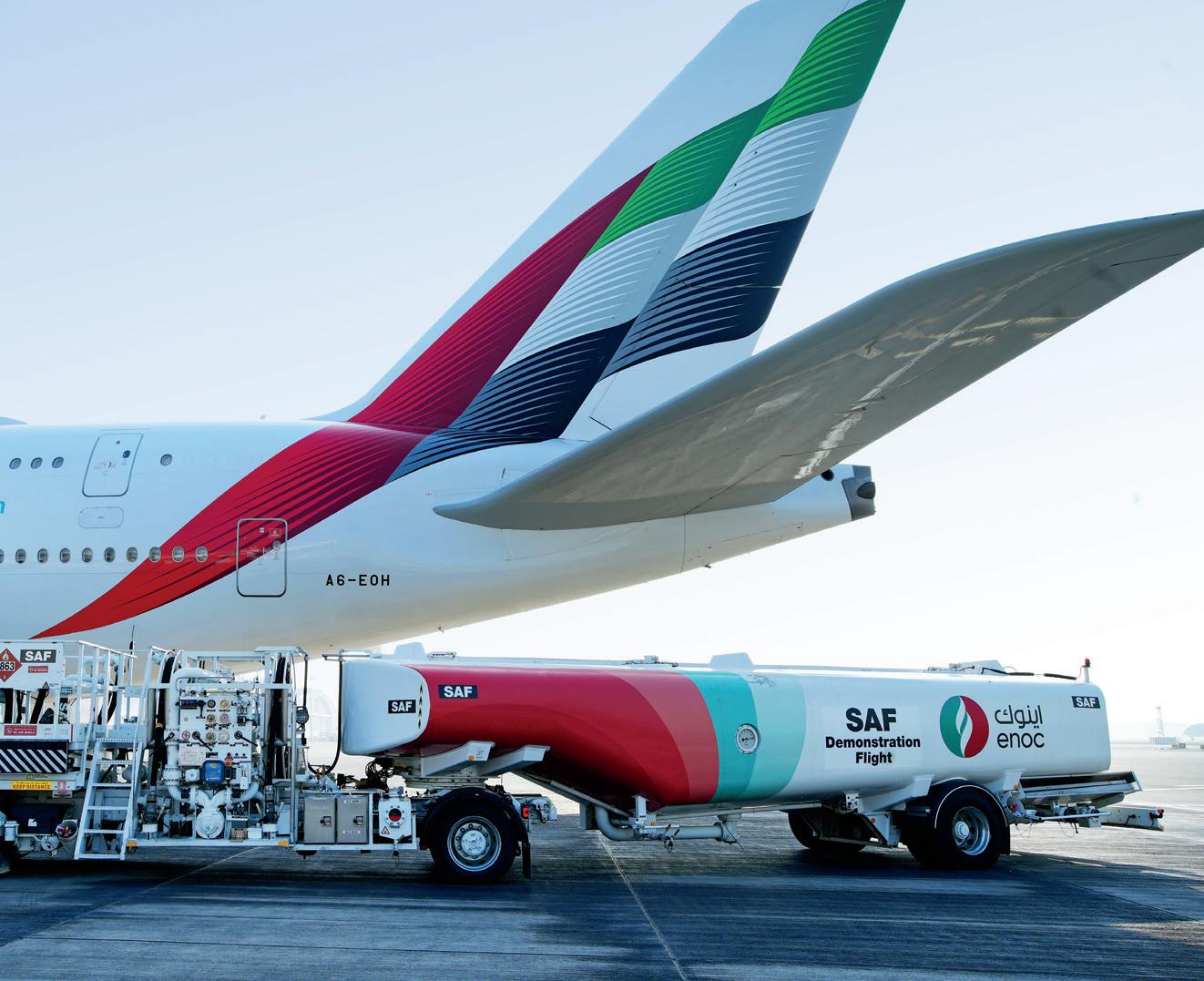
‘We need government partnerships for research and development of SAF’
both Neeleman and Walsh were correct in some respects. Dramatically cutting personal vehicle emissions, for example, would have a much larger environmental benefit than focusing solely on aviation. “But we cannot do nothing as an industry,” he said. “This is why we need government support, partnerships and funding for research and development of SAF.”
Currently, the US is one of the few countries that has incentivised SAF production – tax incentives were included in the Inflation Reduction Act of 2022. The European Union took a different approach and mandated SAF usage beginning at 2% of all fuel in the bloc beginning this year, and rising to 70%
by 2050. The UK, meanwhile, has set out its Jet Zero strategy. In 2024, it also mandated that 2% of all aviation fuel in the country must be SAF beginning this year and rising to 22% by 2040. However, if an airline cannot meet these requirements, the government offers a buy-out option. A revenue-guarantee mechanism for suppliers that many believe is needed to speed up construction of new SAF production plants is expected by 2026. Though that may be too late for the previous UK government’s commitment to have at least five SAF plants under construction in the UK by the end of 2025. International Airlines Group (IAG), owner of British Airways, has to date committed $3.5 billion to SAF supplies in the UK and globally.
“In the US, the markets are in a bit of a chaotic situation with the change in administration,” says Nikita Pavlenko, programme director for fuels and aviation at the International Council on Clean Transportation – a think tank that backs cutting transport emissions. The chaos affects both airlines and producers alike, with uncertainty around
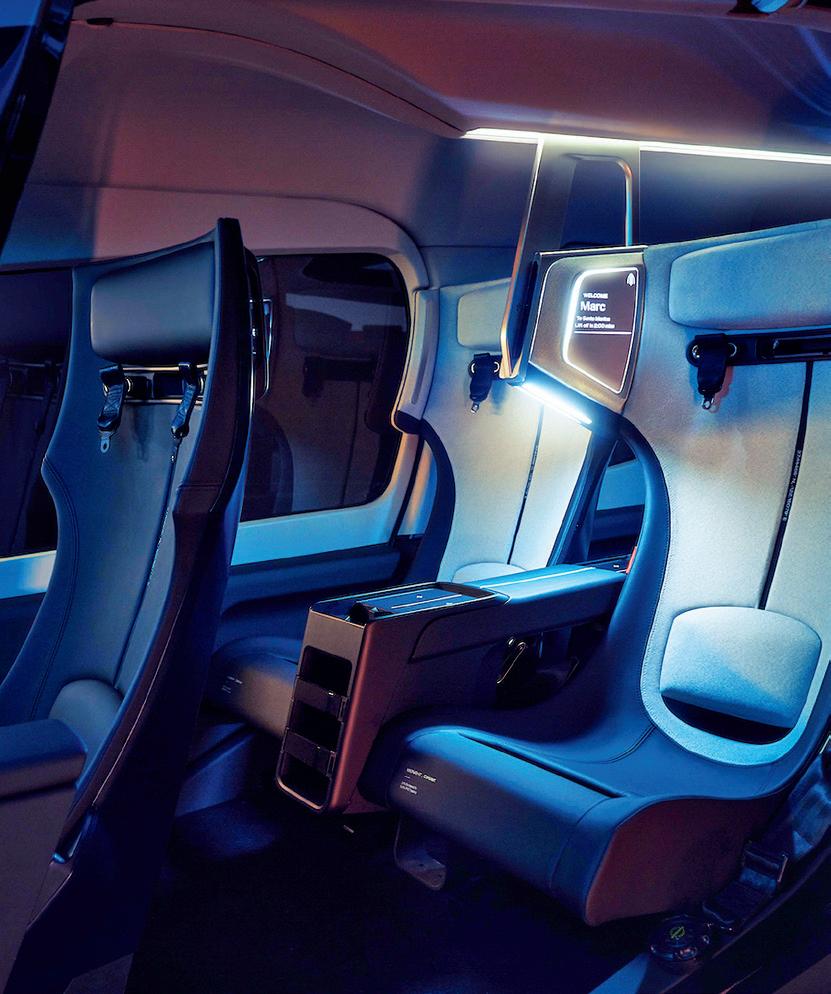
Many have their eye on the rapid emergence of electric aircraft, notably electric vertical take-off and landing – or eVTOL –planes, as a symbol of the industry’s greener future. These batterypowered craft made by companies such as Archer Aviation and Joby Aviation could begin carrying passengers in places like Dubai and New York in the next few years.
But few in the industry expect the electric planes in development today to make a meaningful difference toward reducing emissions. The
aircraft are too small – most seat just four passengers – and cannot fly far enough to alter existing travel patterns.
“It’ll be like a bicycle with training wheels – it’s what you will learn on,” says Henry Harteveldt. The first generation of eVTOLs will likely serve niche markets.
Delta has already said one of the first markets for its eVTOLs from Joby will be Manhattan to New York’s John F. Kennedy International Airport (JFK).
The craft will replace fossil-fuel-powered helicopters on the Manhattan-JFK route.
FROM ABOVE: Cabin of the Archer Aviation Midnight eVTOL aircraft; United Airlines purchased the most SAF of any US airline in 2023
‘We are at ground zero in starting to define and scale this marketplace’
the future of federal tax incentives as well as loan and grant programmes.
“If you’ve got proven technology, we should have access to lower cost of capital,” said Adam Klauber, vice president of sustainability and digital supply chain at SAF producer World Energy, at a Bloomberg event in February. “It’s a really appropriate place for public funding.”
“We are at ground zero in starting to de ne and scale this marketplace,” said Lauren Riley, chief sustainability of cer at United, at the Bloomberg event. And she’s right. Global SAF usage is still minimal, amounting to little more than a rounding error.
There is not a single electric aircraft in commercial service globally. And hydrogen fuel cell technology is decades away from the energy densities needed to power commercial planes such as the Airbus A320 or Boeing 737.
IATA expects SAF production to double this year to approximately 713 million gallons. One driver is the opening of new production facilities. If SAF production continues to double annually, production of the fuels would meet or exceed that of jet fuel a few years before the airline industry’s 2050 net-zero target. But it is not expected to double inde nitely – at some point, the world will run out of used cooking oil and disused biomass. Synthetic sources, for example “green” hydrogen, will need to be developed.
That, however, requires determination, grit and a lot of patience to come to fruition – things that, at least in the US, appear in short supply when it comes to green tech. Just look at Southwest Airlines’ decision to lay off the majority of its sustainability team in February.

“Sustainability has taken a back seat,” says Shashank Nigam, founder and CEO of aviation advisor SimpliFlying and co-author of the book Sustainability in the Air. “It’s the companies that are able to adapt to be energy-resilient, energy-dominant that will succeed.”



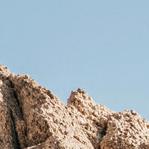





...and at these nature-rich destinations, you can immerse yourself in some of the most treasured wilderness experiences across the planet



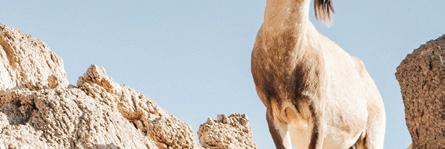








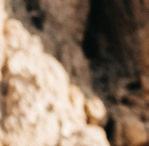



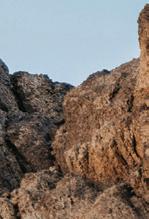















In a world increasingly defined by speed and screens, across the continents, a quiet movement is taking hold: a growing number of travellers are seeking places that don’t just showcase nature, but protect it. Around the world, conservation-led lodges and nature-rich sanctuaries are redefining what it means to explore responsibly, by inviting guests to step inside ecosystems where each encounter doesn't just offer them an experience to remember, or to learn something new, but that also supports efforts towards preservation. Whether that means tracking gorillas through mist-shrouded forests, diving with manta rays in protected waters, or striding among ancient mangroves, these experiences can reconnect us with the planet’s most awe-inspiring landscapes – all while instilling a greater sense of urgency to protect them. Each one is an invitation to connect more deeply with the wild: to stand face-to-face with the type of nature we shouldn't just explore through documentaries. If you're ready to embrace the next frontier in travel – one that isn’t about going further, but about going deeper – these stunning, nature-rich destinations inspire a call to action, to transform travel from an act of consumption into one of care.

Sustainability is big news in the Maldives. Many of its resorts place a large emphasis on ecological preservation, having embraced renewable energy, sustainable fishing, coral restoration, and the protection of marine ecocystems, with properties such as Gilli Lankanfushi, Six Senses Laamu, Kuredhivaru Resort & Spa Maldives, Hideaway Beach Resort & Spa, Coco Palm Dhuni Kolhu, and LUX South Ari Atoll among the standouts. The latter – where guests can dip into a world of oceanic wonders with more than 50 dive sites within its marine-protected location – once boasted the world's largest floating solar platform at sea. Marriott's Maldives-based portfolio of 12 properties and counting has made a solid commitment towards sustainability. Eco-friendly considerations have been incorporated into the W Maldives, the St. Regis Maldives Vommuli Resort, The Westin Maldives Miriandhoo, JW Marriott Maldives Resort & Spa, and Le Méridien Maldives Resort & Spa – the latter three of which have boasted Green Globe certification. Another property in Marriott's list that's making waves is The Ritz-Carlton Maldives – a place that doesn't just make an effort to treasure marine life through its daily practices, but also gives guests numerous hands-on opportunities to get involved.

On land, the resort’s landscape is filled with thousands of adopted trees and native plants chosen to prevent forest degradation and reduce importation. In the Mystique Garden, a nearly 100-foot-tall Banyan tree – dedicated to late architect Kerry Hill – stands as a symbol of renewal. Beyond it, white sand leads to a lagoon that shelters crabs, birds, and sea turtles. Beneath the surface, a coral reef encircles the island, thriving with rays, lobsters and turtles. To protect it, the resort partners with the Olive Ridley Project (ORP), supporting the rescue and rehabilitation of injured sea turtles.
One standout initiative is the “Eye in the Sky” drone programme led by Dr Melissa Schiele. The project monitors ghost nets – abandoned fishing gear that traps marine life – and has already rescued five turtles and collected 41 nets weighing nearly two tonnes. Guests can take part by learning to pilot drones such as the Sub Aqua X sub-sea rover, to explore the reef and observe marine life both at sunset and after dark, as well as detecting ocean plastics and ghost gear. Meanwhile, the resort’s “A Halo of Discoveries” programme connects guests with the environment through coral planting, marine biology sessions, and local cultural experiences. Over 2,000 coral fragments have been planted to create new habitats, while VR headsets allow non-snorkelers to explore the Maldives’ marine world virtually.
ABOVE Fari Campus floating panels, The Ritz-Carlton Maldives
TOP RIGHT
The Sub Aqua X at The RitzCarlton Fari Islands
The Ritz-Carlton Maldives's resident naturalist and environmental ambassador, Olivia Forster, says the strength of the resort’s conservation programme lies in connection: “Because it’s not just research in isolation or only for our resort – it’s about weaving science, guest engagement, and community impact together. We use world-class science and innovative tools like drones, but we also translate that research into meaningful guest experiences and education. That combination – rigorous conservation and genuine human connection – creates real change and lasting memories. What makes our programme unique is the incredible range of what we do. Few places in the Maldives combine so many different elements under one roof, from using hydrophones to listen to underwater soundscapes, to pioneering conservation technology projects with drones, to looking at plankton under the microscope, or collaborating with our Visiting Heroes. That diversity is why we call ourselves naturalists rather than only marine biologists – we connect people with nature in every possible way. We’re especially proud to be the first resort in the Maldives to run a conservation technology project of this kind, using drones to detect plastics and ghost gear from the air. Just as important is our commitment to sharing what we learn – so that others can follow in our footsteps, and together, we can scale the impact far beyond our own island.”

This beautiful island in the Malay archipelago is shared by three countries: Malaysia, Indonesia, and Brunei. One of the world's most unique destinations in terms of biodiversity, here, you'll find endemic flora and fauna including the red-coated Bornean orangutan, the Bornea pygmy elephant – the smallest elephant in the world – and the Rafflesia arnoldii, the largest single flower on Earth, that has earned the nickname "the corpse flower" due to its odour of decaying meat – which attracts insects to help it pollinate. The Borneo Orangutan Survival Foundation runs the largest ape conservation programme in the world, and it welcomes in-person volunteers for a minimum two-week stay between October and March.
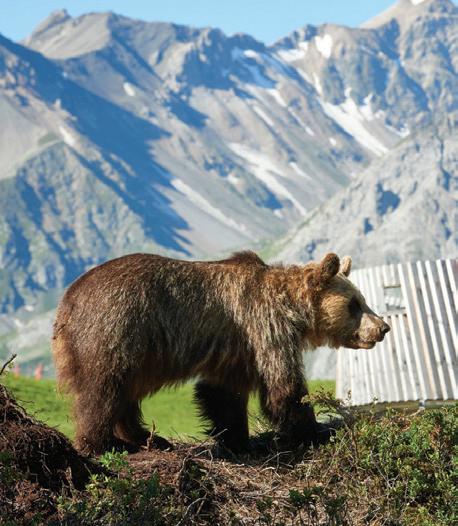

FROM ABOVE: A Rafflesia arnoldii, also known as the 'corpse flower', in Borneo; Riding a Marwari horse around Sariska Lodge in Rajasthan; A bear at Arosa sanctuary in Graubünden, Switzerland
At the edge of Rajasthan’s Sariska Tiger Reserve, Sariska Lodge is redefining responsible travel while offering a model for sustainable luxury. The intimate 15-acre retreat was created by conservationist and hotelier Anand Shekhawat and entrepreneur and wildlife enthusiast Puneet Jain, to spotlight India’s first successful tiger relocation story and promote conscious tourism. Built over 2.5 years using locally sourced materials and surrounded by more than 15,000 native plants, the lodge mirrors the forest’s resilience. Eleven thoughtfully designed suites, an organic garden, and experiences including curated safaris, walks through birdwatching trails, and starlit evenings, allow guests to experience nature with respect, purpose, and mindfulness over haste.
High in the mountains of Graubünden, Switzerland, the Arosa Bear Sanctuary – also known as Bärenland – offers a heartwarming reminder of what responsible travel can achieve. Spread across 30,000 sqm, it provides a new life for rescued bears like Meimo, Amelia and Jambolina, all of whom were rehabilitated from captivity in Serbia and Albania. The destination offers an extraordinary experience at 2,653m above sea level: the chance to witness these rescued bears thriving in a protected alpine landscape. Here, they roam alpine meadows, play, and rest under open skies.
Visitors can explore suspended walkways and viewing platforms, learn about bear behaviour through educational trails and a themed “bear school,” and capture scenic moments at the Weisshorn peak. Every element of this family-friendly destination, from its playful miniature golf course to its education programmes, is designed to teach compassion and respect for nature and wildlife, combining conservation, education, and recreation through a prime model for ethical wildlife tourism and meaningful connection.

Despite being world-famous for its glittering cities, there is a healthy amount of nature to be found in the UAE if you know where to look. From the animal-rich safaris at Sir Bani Yas Island to the mountains and lakes of Hatta and Jebel Jais, to the flamingoes at Ras Al Khor Wildlife Sanctuary, there is wonder to be found from its desert to the mountains, coastal areas, and marine world. One particularly unique spot is the Khor Kalba Mangrove Centre. Home to the oldest mangrove forest in the country, the centre offers a thorough chance to educate yourself on everything from topography to insects, turtles, gazelles, various birds – including the rare Arabian Collared Kingfisher – plus fish and crabs. The learning centre has an indoor and outdoor area, plus a café with great views, and you can also go kayaking and stand-up paddleboarding here. Want to spend the night? Book into the Kingfisher Retreat, a luxe glamping experience by Shurooq's The Sharjah Collection.

The NEOM Nature Reserve is emerging as one of the Middle East’s most ambitious conservation success stories. Encompassing vast deserts, mountains, and coastal plains, the reserve aims to restore 1.5 million hectares of land and plant 100 million native trees and shrubs. So far, rewilding efforts have brought back the Arabian oryx, sand and mountain gazelles, ibex, ostriches, and falcons – species unseen in the region for decades. Led by Dr Paul Marshall, NEOM’s Head of Nature, the project demonstrates how large-scale ecological restoration can coexist with regenerative tourism – and visitors to the kingdom can now explore this wilderness reborn.
CLOCKWISE FROM ABOVE: Khor Khalba Mangrove Centre; A mountain gorilla in Uganda; Oryx at the NEOM Nature Reserve


Bwindi Impenetrable National Park in southwestern Uganda boasts more than 1,000 flowering plant species, making it one of the most diverse forests in East Africa. It's also home to 120 species of mammals, more than 300 types each of birds and butterflies, 27 breeds of frog, and more – including 400 Bwindi gorillas, which is half of the world's remaining population of these endangered mountain gorillas. Across the country, Uganda treats its gorilla tourism with a strongly ethical approach that puts conservation first: visitors must obtain permits – which help fund anti-poaching efforts, habitat protection, and community development – and must follow strict rules involving limited visitor numbers and one-hour max viewing times. Permit costs can start from USD$800 and up for foreigners and non-residents, but the experience of seeing this once critically-endangered species in its natural habitat? Priceless.
Part of Ecuador, this volcanic archipelago in the Pacific Ocean is said to have inspired Darwin's theory of evolution, following his visit in 1835. More than 80% of its land birds and 97% of its reptiles and land mammals can't be found anywhere else on Earth, and from its marine iguana, giant tortoises, lava lizards, lightfoot crabs, and sea lions, to its exotic birds, such as the flightless cormorant, blue-footed booby, Galapagos penguin, waved albatross, frigatebirds, and Darwin's finches and beyond (including snakes, sharks, and flamingoes), it can offer wildlife enthusiasts the trip of a lifetime. Within its 19 main islands, six smaller ones, and over 100 islets, only four are permanently inhabited – while some are completely uninhabited by humans. Visitor numbers are highly regulated, and strict rules must be followed within the national park, from remaining at least six feet away from the wildlife; not using a flash in photography (with professional footage requiring a pre-obtained permit); and being sure to leave no trace, not taking anything from the islands, and never introducing any new food, animals, or plants there. Overnight stays are limited to specific locations and timeframes – but the memories of a visit here are certain to remain with you forever.
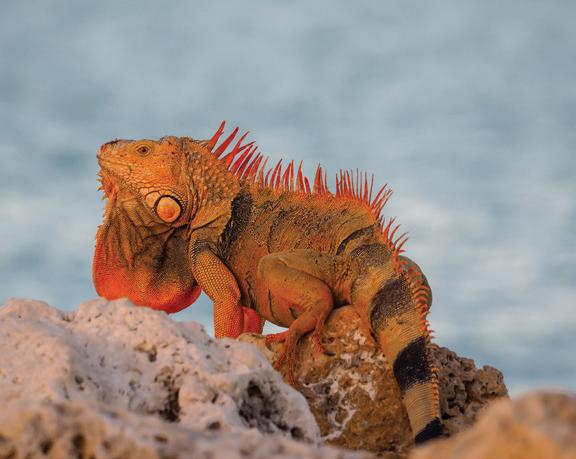
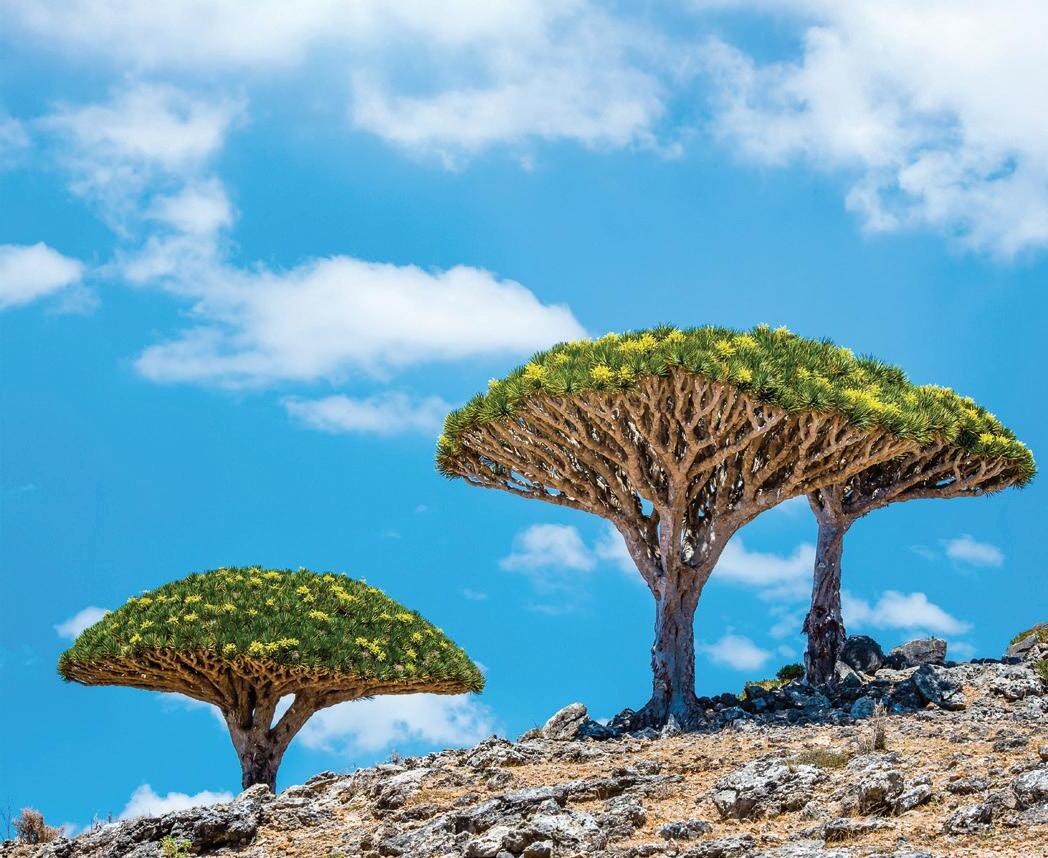
Known to locals as Saqatri, this Yemeni island in the Indian Ocean is famed for its extraordinarily unique biodiversity. From its iconic Dragon's Blood Tree to its Cucumber Tree and Desert Rose, or its Pipistrelle bat, blue-ringed tarantula, rock and worm lizards, and colourful birds, 37% of its plant species, 90% of its reptile species, and up to 98% of its land snail species are endemic. Not a volcanic island, this isolated landmass filled with limestone plateaus, 800-year-old rocks, valleys, and mountains has been described as "the most alien-looking place on Earth".
Although the island was effectively closed to tourism for a time around the start of the Yemeni civil war from 2015, following a partial reopening of commercial flights via Egypt from 2018, since 2019, visitors can now reliably get there via a weekly direct flight from the UAE capital of Abu Dhabi. Independent travel is not permitted – the flight is a governmental charter that requires passengers to be assisted by a local agency that will arrange a Yemeni visa, accomodation, guide, and security clearance.
The corporate retreat is evolving. Gone are the standard conference rooms and buffet lunches: today, companies are seeking luxury, intimate escapes where strategy sessions blend with wellness, fine dining, and the great outdoors
orporate retreats can conjure a very specific image: beige carpet, fluorescent lighting, endless rows of chairs, and the promise of that which all employees fear most: a timesapping PowerPoint presentation.
In theory, these away days are meant to foster connection and strategy. But, for many attendees, they can end up feeling like little more than another mandatory appointment – something to be endured rather than enjoyed.
The gripes surrounding them are familiar the world over: rigid schedules, unoriginal activities, uninspiring icebreakers, and coffee breaks timed with the kind of precision usually reserved for Formula 1 qualifying laps.
It is unsurprising, therefore, that forward-thinking, employee-focused companies are redefining how they bring their people together. These enterprises are trading the cookiecutter business hotel for intimate, luxury properties where strategy sessions share the schedule with wellness, fine dining, and immersive outdoor experiences.
Across sectors, such retreats are no longer mere logistical necessities – they are cultural signals. They communicate that a company values connection, inspiration, and the holistic wellbeing of its team. In this context, properties such as Les Mazots du Clos, a private Alpine estate in Switzerland, exemplify the shift: a boutique luxury space repurposed to host corporate groups in ways that fuse work with restorative, memorable experiences.
More than ever before, companies are recognising that inperson time is precious, and that retreats are an opportunity to do more than meet – they are a chance to engage, inspire, and invest in people in ways that leave a lasting impact.
The rise of distributed teams and remote work has transformed the nature of in-person gatherings. With many employees working across cities, countries, or even continents, the opportunity to meet face-to-face has become rarer, and therefore more valuable. This scarcity has fundamentally shifted the stakes – companies are feeling the pressure to make every gathering count, both strategically and socially.
Yet recognising the value of in-person interaction is only part of the equation. Many organisations struggle to turn their stated values of collaboration and trust into daily reality –where teams actually work seamlessly across departments and employees feel genuinely supported by leadership. The gap between company handbooks and workplace culture remains stubbornly wide.
Corporate retreats have emerged as a solution: carefully designed gatherings that provide a controlled ecosystem where culture can be modelled, reinforced, and experienced firsthand. But the challenge is significant. A recent Gartner survey found 57% of HR leaders agree that managers fail to uphold the desired work environment, which is, in part, why these retreats are moving beyond quarterly targets into intentional opportunities to demonstrate a company’s vision.
Research shows that shared novel experiences – like problem-solving in unfamiliar surroundings – can create stronger interpersonal bonds than routine office interactions. Studies indicate that employees who participate in immersive, well-designed retreats often report higher levels of cohesion,

for creativity and collaboration. The addition of wellness elements, such as guided outdoor activities or mindfulness sessions, can further amplify these benefits.
These insights have shaped how companies now approach retreat design, moving away from purely business-focused agendas toward a hybrid model: part workshop, part wellness getaway, part cultural exploration. When designed thoughtfully, they can do more than drive productivity – they can foster a sense of unity and shared purpose at a time when remote working could easily leave colleagues feeling disconnected. However, the success of such retreats hinges on thoughtful execution. Poorly-designed experiences can feel forced or exclusionary. By combining structured sessions with unstructured opportunities – a group hike, a communal meal, or a guided local experience – well-planned retreats create moments that strengthen relationships and spark collaboration. The result can be a gathering that is both professionally productive and personally significant.
So, what transforms a corporate gathering from an obligation into a place for inspiration?
Privacy and exclusivity have become increasingly important for many companies. Entire properties can be booked for private groups, creating a sanctuary where employees can engage in candid strategic discussions, share vulnerabilities, and explore bold ideas without fear of external judgment or interruption. Equally crucial is the orchestration of time itself. Picture a morning spent mapping product strategy around a crackling fire, followed by an afternoon of snowshoeing that builds trust through shared challenge, then an evening where ideas sparked during the day continue to flourish over a private chef’s locally-sourced tasting menu.
Location serves as the third pillar of transformation. A retreat in the Swiss Alps, the Portuguese countryside, or even
a thoughtfully chosen lakeside lodge does more than provide a scenic backdrop – it actively rewires thinking patterns.
Research in environmental psychology, particularly Attention Restoration Theory, suggests that exposure to nature helps restore mental fatigue and enhances cognitive function, directly boosting creative problem-solving and well-being during work sessions.
The choice of setting itself communicates intent. Booking a conference hotel simply because it sits beside a well-connected highway borders on the apathetic, while selecting a location with care – whether an intimate vineyard or a mountain retreat – signals that the company values meaningful experience over mere convenience. When employees recognise this investment in their collective journey, engagement and retention of key insights can increase dramatically, creating lasting impact that extends far beyond the retreat itself.
Tucked away in the Swiss Alps, the estate of Les Mazots du Clos was conceived by owners Johannes van Eeden and his wife Saskia Wicomb as a place designed to inspire – where the mountains, the quiet, and the sense of escape give teams the mental room to think differently and connect more meaningfully. Immersion in a location as evocative as the Alps offers more than just a scenic backdrop; it provides a complete sensory reset. Here, the relentless hum of the city is replaced by the subtle soundtrack of nature – wind whipping through conifers, the soothing trill of a bird – and office walls give way to vast, open skies.
“The Alps give you the perfect escape from the noise,” van Eeden explains. “The quiet, the space to focus, and the stunning surroundings naturally break down barriers and create the right mindset for breakthrough thinking.”
This deliberate detachment from the everyday allows teams to disconnect from routine pressures and mental clutter. It creates a tranquil, focused atmosphere where fresh ideas have


room to surface, and deeper, more meaningful conversations can take place. It is an escape in the truest sense, providing the cognitive clarity needed for genuine strategic thinking and renewed connection.
“What we’ve created is intimate – only seven rooms total, so you get real personal attention – yet also accessible, just 120km from Geneva Airport,” van Eeden notes. “The surreal views of the Dents-du-Midi and Mont Blanc create an inspiring environment you can’t replicate. Most importantly, it works. It drove our company’s success, and I know it can work for other teams, too.”
But Les Mazots du Clos is far from an isolated example. Around the world, boutique properties are reimagining their offerings to meet the rising demand for immersive, human-centric corporate retreats.
In Portugal, vineyard estates offer private tours, cooking classes, and leadership workshops against a backdrop of rolling hills. Bali has become a hub for wellness-oriented corporate getaways, integrating yoga, meditation, and surfing with strategic planning sessions. In Scotland, retreats such as the Craigberoch Business Decelerator focus on low-tech, nature-based experiences to boost creativity and reduce stress, emphasising walking, forest bathing, and mindful reflection. These destinations share a common philosophy: that retreats should prioritise human connection.

A 2024 article in sister publication Business Traveler USA found that some travel agents have seen a 35% increase in hotel buyouts for corporate events over the past two years, which emphasises that companies are increasingly willing to invest in settings that offer something out of the ordinary – a change of pace, a touch of grandeur, or simply an environment that can spark new ideas.
While the investment in a bespoke retreat will inevitably be higher than a standard hotel conference, the potential returns – measured in improved retention, cross-team innovation, and a unified company vision – make for a compelling case. No longer reserved solely for senior executives, luxury retreats have become strategic tools for cultivating talent, reinforcing culture, and driving innovation.
The rise of immersive, people-focused retreats signals more than a change in how companies book meetings – it points to a shift in the very philosophy of work. As remote and hybrid teams make everyday collaboration more fragmented, companies are recognising that in-person experiences can no longer be purely functional. They are opportunities to embed culture, spark creativity, and build connections that ripple through daily work.
In this sense, retreats have evolved from luxury perks to strategic touchpoints: carefully curated spaces where leadership, learning, and team cohesion intersect. For organisations willing to invest thoughtfully, they are not just escapes, but accelerators of innovation, engagement, and long-term performance – a reflection of a wider understanding that people, culture, and human experience are catalysts of business success.
Five must-do activities in one of Oman’s greenest places for a memorable escape

ALALAH IS ONE of Oman’s premier destinations, renowned for its stunning landscapes and mild climate. The third largest city in Oman, it’s also the largest city in the country’s Dhofar province. Salalah’s Khareef season typically runs from late June to early September, with wild monsoon winds bringing cooler climes and rainy weather that transform the landscape into a lush, leafy paradise with waterfalls, verdant greenery, misty skylines, and all of the animals that come with it. While this makes it a top summer spot within the region, it’s also a fantastic place to visit year-round, with beautiful beaches, banana plantations, and a range of historical sites to see, including the Al-Baleed Archaeological Park. From its tranquil seascapes to its majestic mountains, Salalah offers visitors a diverse and enjoyable travel experience. Here are five activities to try during a visit to this enchanting city.
Top tip: If you’re a foodie and visiting during the month of November, why not also stop by the Al Baleed Culinary Festival? Held at Anantara Al Baleed Resort Salalah, this month-long culinary celebration will feature visiting chefs from renowned restaurants across Europe, as well as some of Salalah’s rising stars. To learn more, or to book a dining experrience, visit the resort’s website.
1 Discover the serenity of Ain Razat
For nature-lovers seeking calm and tranquility, Ain Razat is a prime spot. Nestled in the heart of the mountains, fresh water flows across the greenery at this natural
spring, creating a peaceful oasis surrounded by towering peaks. Visitors can stroll along scenic trails lined with tropical trees and plants, taking in breathtaking panoramas while enjoying a soothing escape from the bustle of everyday life, all while immersing yourself in Oman’s natural beauty.
One of Salalah’s most iconic natural attractions, here, turquoise waters and soft white sands create a picture-perfect scene. The beach is famous for its natural blowholes, where seawater bursts through rock formations. Visitors can unwind on the sandy shores, take leisurely walks along the

water’s edge, or simply enjoy the soothing sounds of the waves. The beach also offers opportunities for water sports like swimming and surfing, making it a great spot in which to get active while you enjoy the outdoors.
3
Take in panoramic views from Shaat Viewpoint at Jabal Al Qamar
Jabal Al Qamar is one of Salalah’s most iconic landmarks, and Shaat Viewpoint offers one of
the most breathtaking elevated perspectives in the region. From this vantage point, visitors can admire panoramic views of lush plains, rolling hills, and the surrounding mountains. The area is ideal for hiking, with trails that accommodate various levels of fitness and experience, allowing visitors to explore the mountain while enjoying both adventure and tranquility. Shaat Viewpoint is also a great spot for photography enthusiasts, and those seeking a peaceful retreat to reflect and soak in the beauty of Salalah from above.
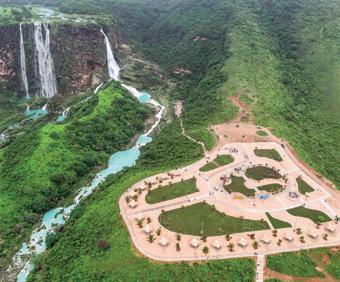
4
Experience adventure in Wadi Darbat
Wadi Darbat is a spectacular natural attraction that combines jaw-dropping vistas with opportunities for adventure. The valley features flowing waterfalls, tranquil natural lakes, and elevated viewpoints offering wide-ranging vistas of the surrounding greenery. Visitors can hike along well-marked trails, wander through lush forests, or simply relax and enjoy the peaceful environment with a sense of mindful presence. A variety of wildlife can also be spotted at this ecological gem, including migratory birds and wild camels. Just don’t forget the insect repellent, and take the necessary precautions if you choose to take a dip in the freshwater lake!
One of Oman’s most significant historical sites, this archeological park dates back over 2,000 years. Once a key centre for the frankincense trade, it served as a hub connecting Oman with East Africa and India. Visitors can explore the ancient ruins, including temples once dedicated to worship, storage facilities for valuable goods, and remnants of the old city walls. The site offers insight into the lives of ancient traders and the civilisation that connected multiple cultures, all set against the backdrop of striking mountains and plains. It’s is a rich cultural journey that allows visitors to experience Oman’s heritage up close.
















OMETIMES YOU JUST NEED TO GET AWAY. To slow down, breathe in some fresh air, and feel something real. For some, Knystaforsen is that pause. Just two hours from the city, this one Michelin-starred and Green Star-awarded restaurant sits deep in the Swedish countryside, offering an escape where food, re, and nature combine to create something far more immersive than fine dining. Founded by chef Nicolai Tram and his wife Eva Tram, Knystaforsen is built on a deep respect for nature and Nordic traditions, with every dish prepared over an open ame.
The setting itself feels like part of the story. Knystaforsen occupies an old sawmill on the banks of a river, now transformed into a space that blends history with a raw, modern elegance. Arriving here, you are immediately struck by the shift in pace. The forest surrounds you, the water rushes nearby, and the air carries the faint scent of woodsmoke. The evening begins in the upstairs lounge – a cosy space where cocktails and small bites are served. Even here, re is never far away. Drinks are touched by ames, snacks arrive kissed with smoke, and the atmosphere sets a rhythm of intimacy and anticipation.




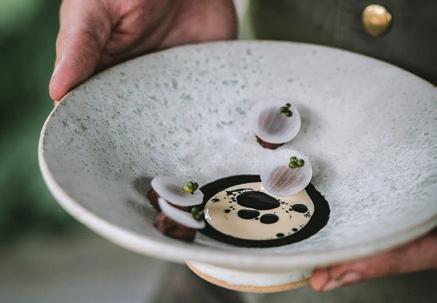
Moving into the dining room, the tone shifts again. The space is pared back, peaceful yet wild, a reflection of the land outside with floor-to-ceiling windows looking onto the greenery. Every dish carries a unique expression of fire. Sometimes it is a crisp edge that adds texture, sometimes a slow smoke that deepens flavour, sometimes a char that anchors a dish in memory. Fire here is not used as a gimmick but a language, woven into every stage of the menu.
The dishes feel both elemental and elevated. The menu draws on hyper-local ingredients, from wild game to foraged produce and seasonal offerings, reflecting the surrounding landscape. The dish of the evening was Fire, Forest and Water: juniper-cured, smoked pike perch paired with a creamy crayfish bisque that seemed to bring the surrounding landscape directly to the plate. Duck hearts with pheasant and a burnt oil sauce, darker and more primal, reminded me how cooking can stir something instinctive as well as intellectual. What was most impressive was how no two dishes repeated the same gesture. Each found its own way to use fire; its own tempo and its own story. The meal felt alive, constantly shifting, and always surprising.
The heart of the evening came outdoors. Guests were led into the night, wrapped in blankets and gathered around a communal campfire. Dishes were passed under the open sky, faces glowed in the light of the flames, and conversations took on a quieter, more reflective tone.
Having grown up in a city and spent most of my life in one, I cannot overstate how much nature truly heals. There is a

duck hearts with burned silver onions, ramson capers with pheasant and burn hay sauce; Cooking in fire; Birch syrup ice cream with a balsamic vinegar filling and biscuits made from birch bark
OPPOSITE PAGE: Moose tartare on crispy sour dough bread with smoked mayonnaise, grated horseradish and pickled elderflowers
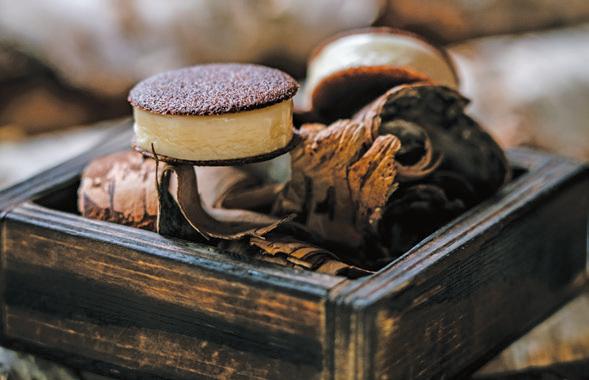
profound magic in fresh air, in being rooted to the earth, and in the joy of food cooked over open flame. That moment at the fire was a reminder of how rarely we stop long enough to feel these things. The course itself felt secondary to the act of sharing, though it carried the same thoughtfulness and precision as the dishes indoors. What mattered was the way the flames seemed to dissolve the usual distance between guests and chefs, turning the meal into a collective experience.
The return indoors felt almost like a gentle landing. Petit desserts arrived back in the lounge, each bite playful yet grounding. S’mores were toasted with a flame, a final nod to the childlike joy of fire. Outside, fairy lights strung above the seating area gave the night a soft, magical glow. Sitting there, wrapped in the remnants of woodsmoke and conversation, I felt the kind of contentment that lingers long after a meal is over. Knystaforsen’s Michelin star and Green Star recognition speak of excellence and sustainability, but accolades only tell part of the story. The true magic lies in how seamlessly fire, food, and forest are brought together. This is not dining as performance, nor as pure luxury. It is dining as immersion, as connection, as pause.
For those who want the evening to last longer, Villa Knystaforsen offers the chance to stay overnight. Just across from the restaurant, the villa carries the same balance of rustic warmth and understated refinement. Wooden interiors, windows that open to the river, and a sense of calm that carries through the night. Morning arrives slowly here. Instead of traffic, you wake to the sound of water and birdsong. Breakfast is served as another continuation, thoughtful and grounding rather than hurried. It feels like the final course of the experience, one that ties together the fire of the night before with the stillness of a new day.
Knystaforsen is not just about fine dining, nor is it only about the craft of fire. It is about stepping out of the rush of the city and into a different rhythm. It is about gathering around flames with strangers who feel, for a night, like companions. It is about waking by the river with the taste of woodsmoke still in the air and realising that sometimes, the greatest luxury is time.

From famine to fortune, seaweed has loyally stood its ground as a steadfast staple along Ireland’s Atlantic Way







says the pink-skinned, shirtless man beside me in dripping board shorts, “but it’s grand when you get in.”
Just beyond, surfers bob in freezing waves, the air sharply scented with salt and pine.
“Better after the sauna though!” he grins, stamping wet sand from his feet and climbing into a steaming, barrel-shaped sauna in the car park at Lahinch – one of a growing number of popups along Ireland’s Wild Atlantic Way.
Outsiders might see an inhospitable, weather-bitten seaside (my Australian upbringing means I’m sensibly bundled in a puffer jacket and woolly hat). For the people who live here, however, there is a fierce affection for this environment – it’s considered a place that heals. And that’s, in no small part, thanks to seaweed.
Nothing embodies the twin revival of coastal appreciation and wellness-focused activities more than seaweed. An integral part of ancient life, the ocean flora is enjoying a resurgence in popularity – not just as something to eat, but as something to forage, bathe in, and lather on. And like everything and everyone in Ireland, it’s got a cracking story to tell.
Ireland has always been shaped by its ocean – not just along its sea cliffs, but far inland. Take the Burren: a vast, alien landscape of fractured limestone stretching across County Clare, close to the Cliffs of Moher. The Burren’s grey flagstones might seem barren, yet you’ll find tombs older than Stonehenge, while deep fissures known as scailps house rare wildflowers found only in the Mediterranean, the Arctic, and here.
But when it comes to the taste of Ireland, what matters lies beneath your boots: the compacted remains of long-dead sea creatures from a long-vanished tropical ocean. Squiggled mollusc trails and ancient oysters embedded in cave walls. This prehistoric seabed now filters into the groundwater, feeding the land with calcium.
Why the geological trivia? It’s what gives the cows and sheep here their exceptional flavour.
“Believe me, everything that grows in the world is dependent on the rock,” shares Siobhan McDonald, my guide along the Atlantic Way.
“The limestone is to animals as calcium is to

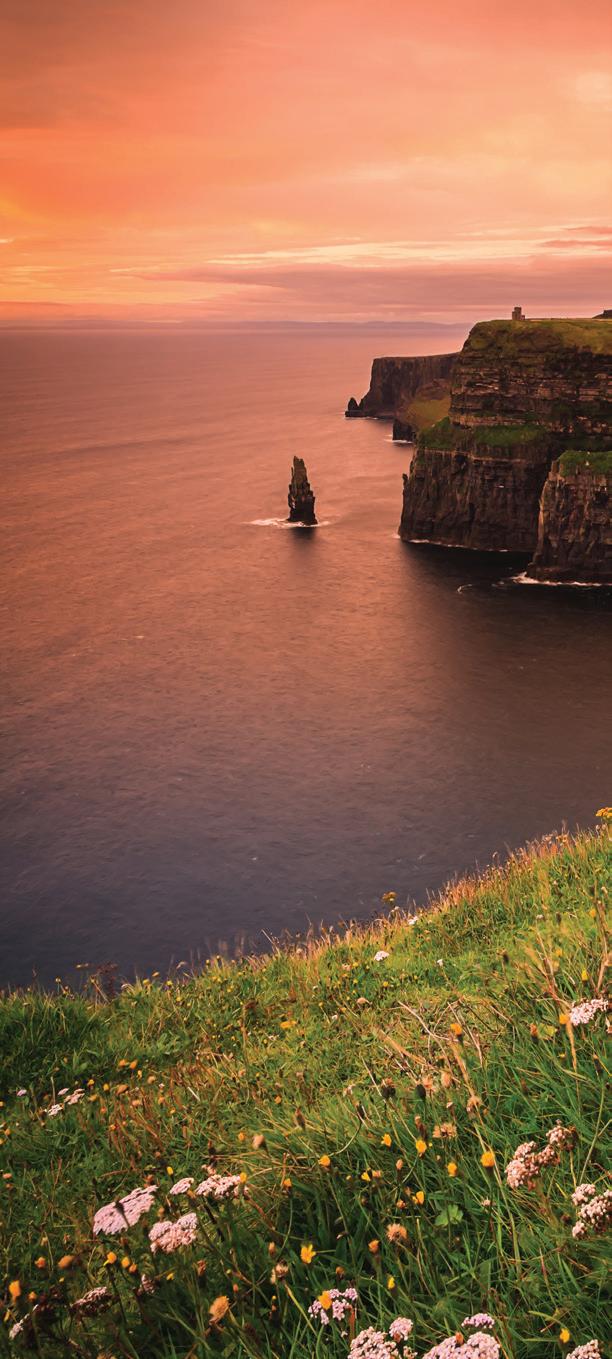


Some seaweeds, like kelp, pack more calcium than milk, helping your bones stay sturdy, straight from the sea.
humans. Limestone-based grass feeds animals, giving them strong bones and good-quality meat.”
It’s not just a story of soil. That same elemental mix also feeds the sea. Along the shoreline, calcium-rich runoff collides with cold, mineral-packed tides. It’s ideal conditions for another kind of harvest: tidal greens prized for their richness and resilience.
Sea vegetables are among the most nutrient-dense plants in the world, packed with vitamins, minerals, iodine, and iron. Of the 23,000 known varieties, one stands out in the briny waters for its role in shaping the Irish diaspora: sea moss.

“It’s distinguishable, sort of spongy,” says Lucianne Hare, founder of Nourished in Nature – the seaweed foraging and wild wellness arm of Knocknarea Farm in County Sligo. As we meander down Strandhill Beach, she holds up a clump of marooncoloured sea moss. “It’s full of antioxidants, vitamin A, vitamin B1 and B2.”
Its other moniker is ‘Irish moss’ – a nod to the pioneering role Irish immigrants played in algae farming off Massachusetts in the 1850s. Harvested for carrageen, a natural thickener still used in food today, this small algae spurred Irish immigration to the US. But the name also calls back to the disastrous An Gorta Mór – the Great Hunger. Once again, it was the land that shaped survival. Fertile waters bred seabeds and ‘Irish moss’ fed the starving population during the famine of 1845-52. Despite the shoreline crop’s literal lifesaving role, its association with the famine cast a long shadow – marking it for generations as a food of hardship and shame. But like the tides that sweep sea moss in and out of Sligo Bay, seaweed’s fortunes in Ireland are shifting once again.
Seaweed harvesting has been revived by trendy, boot-clad foragers with tide charts in hand.
In Sligo Bay, groups like Nourished in Nature lead would-be harvesters across salt-glistening rocks, teaching them to read tides and snip – not strip – the crops. “Haircut, not harvest,”
SURPRISING SEAWEED FACTS

Seaweed is loaded with iodine, which your thyroid needs to keep your hormones ticking nicely.

Certain seaweeds can absorb UV rays and scientists are studying them as an eco-friendly sunblock option.

Seaweed soaks up CO2 like a natural air filter. When dried and crumbled onto soil, it can help crops grow.
is the golden rule. Along the way, you learn to spot species such as dillisk, samphire, and sea spaghetti, whose uncultivated flavours are as nutrient-laden as the waters they come from.
But even without stepping into the shallows, coastal crops are hard to miss. Along Ireland’s western edge, they show up in bakery windows and café menus – the kelp butter and green-flecked cookies have an umami hit that triggers cravings for ‘just one more bite’.
In home kitchens, the ocean plant features in smoked salts, dried greens and heritage dishes like the silky, softly set carrageen pudding – family recipes often pulled straight from Mam’s cookbook.
It stars in high-end fare, too. JP McMahon, founder of the Galway Food Festival and Michelin-starred restaurant Aniar, champions Ireland’s shoreline treasures. His menus are rooted in native ingredients: tidal botanicals, shoreline herbs and oysters. A 24-course tasting menu features morsels
‘The magic of seaweed extends beyond the edible arena’
like kelp and sea beet, lobster and roe, potato and buttermilk, and eel smoked over ash.
And back in the Burren, seaweed shapes the signature oak-smoked organic salmon at the Burren Smokehouse. The high-quality flavour comes from a mix of craft and careful curation. Fillets are cured in Irish sea salt – fine as powder and gentle on the flesh – then cold-smoked over oak shavings from a neighbourhood furniture maker.
The result is a texture that holds all the natural oils and vitamins without overwhelming the fish’s clean, briny character. The secret lies in the blend of native seaweeds, including dillisk, kelp and carrageen, foraged just 30 minutes away in Quilty. Each batch is gently dusted with this “salad mix” before smoking, giving the fish its distinct, mineral-rich finish.
A family-run business, the Burren Smokehouse was founded by Swedishborn Birgitta Curtin and her husband Peter. Here, you can watch the process up close, sample slices onsite, or pick up vacuum-packed fish and a bag of the good (sea)green stuff to bathe in later...
BELOW Langoustine, seaweed, sea herbs at Aniar

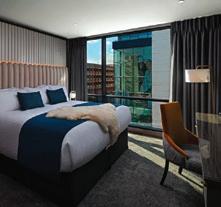
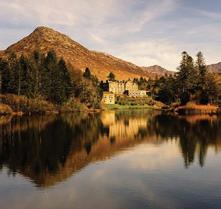


Indeed, the magic of seaweed extends beyond the edible arena. Seaweed bathing might sound like the latest fad, but in Ireland, it’s anything but. Its use as a therapeutic treatment dates back to at least the 19th century, when people would steep in algaerich tubs to ease weary joints. In fact, the surf-famous Strandhill and nearby Enniscrone were once beloved Edwardian seaside escapes for such practices.
Today, wellness pilgrims flock to VOYA Seaweed Baths in Strandhill, which has revived and modernised the practice into a holistic, algae-powered ritual. Treatments begin with a steam to open the pores, followed by a deep, silky submerge in hand-harvested algae. As the water warms, an elemental gel is released that soothes joints and deeply hydrates the skin.
“The water gets almost viscous,” explains VOYA’s co-founder Neil Walton, referring to the calcium alginate that leaches from the plants into the baths. “It’s like nature’s own serum.”
Used today by everyone from long-haul flyers to elite athletes, the baths harness the naturally alkaline properties of seaweed and seawater to help rebalance pH and reduce inflammation.
If you’re lucky, you’ll land a tub by the window with a view of the crashing waves, the scent of moss and kelp clinging to your skin.



Since 2005, Co ee Planet has shaped the region’s 360° co ee culture - sourcing, roasting, packaging and serving with care, precision and pride.
From our cafés to our retail and foodservice partners, every cup reflects our belief that great co ee brings people together - crafted to perfection, shared with purpose.
A perfect crema that reflects twenty years of mastery in every pour





















































































































1 Hotel Toronto + JW Marriott Hotel Riyadh
RESTAURANT REVIEW
HOTEL REVIEWS Al Hadheerah + AKABEKO

This biophilic urban retreat opened in Toronto’s cool King West neighbourhood in 2021. Merging hospitality with a clear sustainable ethos, the 1 Hotel brand is inviting, modern, and mindful
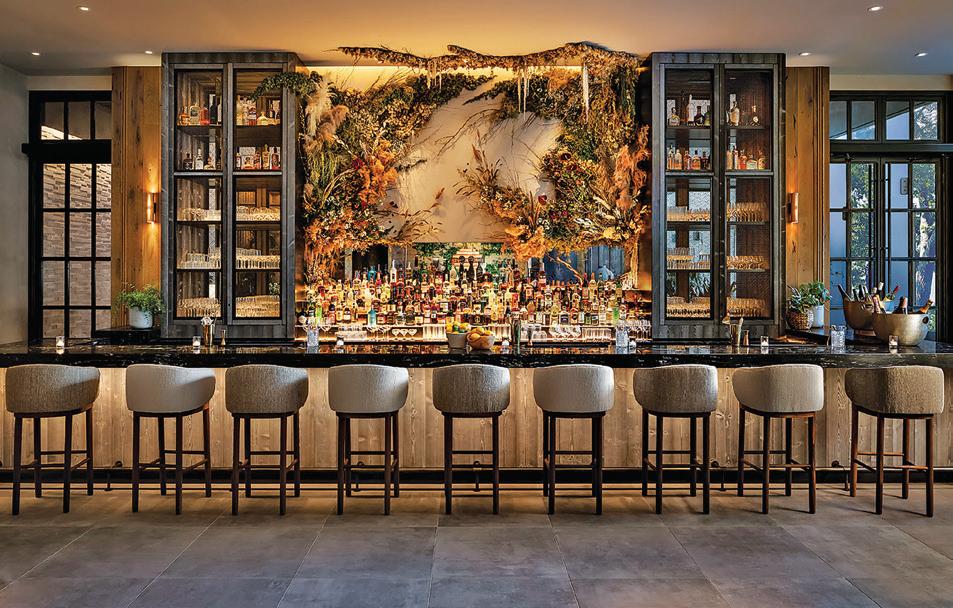
A gorgeous statement wall welcomes guests in the lobby lounge
Parent company SH Hotels & Resorts (an affiliate of Starwood Capital Group) launched the eco-luxe 1 Hotels brand in 2015, with 11 properties currently around the world, including London’s 1 Hotel Mayfair (read the review at businesstraveller.com).
Seven more are due to open soon in locations including Seattle, Paris and Melbourne.
The cosy, loungelike lobby is complete
with a fireplace and a packed calendar of daily social events, from tarot readings to acoustic sets and various happy hours. Service was friendly and down to earth.
Spacious rooms are decked in natural materials and neutral colours, think: wooden floors, tree stump bedside tables and woven rope lamps. I sank deeply into the king-size bed for a restful sleep.
Sustainably minded details range from the ‘Leave One Thing’ initiative, inviting travellers to donate any unwanted items of clothing to local charities, to filtered tap water. An egg timer in the shower offers a gentle reminder to minimise water wastage, while large-size Bamford amenities come with eco-credentials and floral scents. Simplicity is applied to modern tech, with foolproof master


GOOD -TOKNOW
You can book the hotel’s Audi Q8 e-tron house car on a first-come, first-serve basis Fridays and Saturdays

I felt immediately at home in this city oasis and enjoyed my stay. A great option for the modern business traveller.

BEST FOR Eco-chic stays in the heart of Toronto’s answer to Soho.

Group yoga classes on the third floor every Sunday.
PRICE
From C$461 (AED1,210)
CONTACT
550 Wellington St W, Toronto, ON M5V 2V4; +1 416-640-7778; 1hotels.com
switches positioned both by the door and the bedside. Wifi is seamless and powerful and a large smart TV is embedded in the wall. Views were less impressive – my room faced into a courtyard surrounded by other rooms, which meant I had to keep the curtains closed for privacy.
The hotel’s Casa Madera is a fantastic dining destination for cool Torontonians. Even on a casual Tuesday, the restaurant was packed with glamorous guests on cosy dates and group outings. Moody low lighting and lavish foliage served up buckets of atmosphere, while the central bar sent out smoking cinnamon cocktails. The kitchen also impressed with Mexican-Mediterranean
fusion cuisine, including fresh bowls of ceviche and flavoursome jackfruit tacos. Breakfast, meanwhile, was served in the bright and airy 1 Kitchen. Annoyingly, it was a QR-code menu (same for room service), which was a little glitchy, but the selection was great – ranging from healthy granola bowls to indulgent breakfast sandwiches.
Harriet’s Rooftop bar is a glam location for sundowners and cityscape views, with a rooftop infinity pool next door (though this is closed during the winter season).
There’s also a meeting room, a 24/7 gym (underground) and the hotel is pet friendly.


Located on King Fahd Road, the hotel is just 27km (which is a 30-40 minute drive, depending on traffic) from King Khalid International Airport.
Mindful luxury meets modern design at this top hotel in Saudi’s capital
What’s it like?
Opened in November 2022, this hotel was the JW Marriott’s debut in Saudi Arabia. Belgian-born designer David T’Kint was commissioned to rebrand the former Burj Rafal hotel into the JW Marriott Hotel Riyadh, and his firm, DTK Studio, transformed the interiors of the now-iconic circular tower with earthy tones inspired by the nature of the region, as well as an ancient poem of the Arabian Peninsular that describe the north and south winds sweeping over sand.
The hotel is aimed at both business and leisure travellers, offering personalised service that is led by principles of mindfulness. Its goal is to offer guests a retreat from the hustle and bustle of Saudi’s dynamic capital city, where they can stay connected with its modern facilities while also experiencing wellnessfocused features for a balanced stay.
The lobby, adorned with an emerald-green wall accented with unique light fixtures, is meant to offer a nod to the aesthetic of a wadi environment, while the curved reception desks mimic the sloping nature of the desert’s sand dunes. There is also a tea lounge off the lobby, decorated with side tables designed to be an ode to ancient Saudi jewellery pieces through their decorated bases. These are lit up by lamps that pay homage to the old oil lanterns that were once the only manmade source of light in the kingdom.


The hotel has 349 rooms including one-, two- and three-bedroom suites, of which the largest is the Royal Suite, at 280 sqm, and which encompasses a private gym and entertainment room. Rooms come in various sizes across twelve categories, each of which feature a large, comfortable bed with sumptous bedding, great
views of the Riyadh skyline, luxurious marble flooring, and contemporary décor that lends it a warm and soothing yet executive feel. Highquality bathroom amenities and complimentary wifi is also provided.
As a brand, JW Marriott is known for its excellent dining offering, and the JW Marriott Hotel Riyadh is no different. There are six dining outlets on the premises, including all-day dining restaurant Kitchen on 3 (which hosts live cooking stations, activities for younger guests, and lavish brunches) and the signature JW Steakhouse, which specialises in grilled, smoked, and slow-roasted meats. For sustainability enthusiasts, the JW Glass Garden is worthy of a visit: this warm and sunny greenhouse-style eatery serves meals made with fresh, organic produce (with as much as possible grown on-site or sourced from local farms), that are seasonally-inspired and bear zero carbon footprint. The Capital Lounge, meanwhile, serves a stellar high tea.

A luxurious sanctuary from the buzz of the city centre that’s suitable for business and leisure travellers alike.

FOR
Foodies seeking a comfortable stay with access to a variety of excellent dining options under the same roof.

Casa Cacao Boutique, the first international outlet for the luxury Spanish chocolaterie – the brainchild of three-Michelin-starred El Celler de Can Roca.
A weeknight stay in November starts from SAR 1,131 for a Deluxe room.
King Fahd Road, Sahafah District, Riyadh, Saudi Arabia; +966 11 511 7777; marriott.com


At this iconic open-air desert restaurant, the dinner-anda-show concept comes alive with authentic Arabian flair






What’s it like?
Part of Bab Al Shams since the resort first opened back in 2004, this open-air desert dining venue has been an iconic fixture of the UAE dining scene for the past 20+ years. As an outdoor venue, it’s only open during the winter season, closing for the hot summer. The name “Al Hadheerah” literally translates to “stable” or “barn”, paying homage to its spectacular show. It’s not a restaurant as much as it is a dinner theatre with Arabian flair, and it takes its stage performances as seriously as it does the quality of its food and beverages. The venue, designed to resemble an old Arabian fort, is so large that it has its own entrance separate to that of the hotel – which, since 2022, has been managed by Kerzner international. While the property was renovated and reopened as part of Kerzner’s Rare Finds collection in 2023, the charm of Al Hadheerah

To see the show itinerary – including descriptions of each act plus exact timings – you can scan the QR code on your table. Don’t miss the Horse & Camel show at 9:15pm!
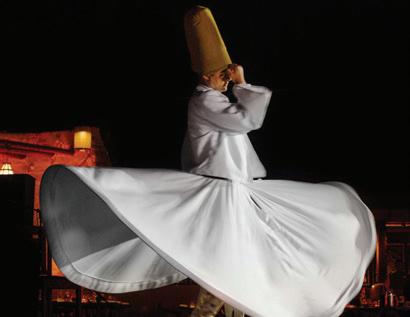
has not been lost – it’s even been enhanced with an exhilirating new fire show that joins the lineup of swirling tanoura dancers, a drumming and dancing dabke troupe, live singers, and graceful belly dancers. The Horse & Camel Show – which depicts a narrative history of desert tribes that battle for water before finding solidarity for collective survival,

with the region’s culture, as it goes beyond the surface-level offerings typically found elsewhere with a taste of authentic Lebanese, Egyptian, Turkish, Emirati, and other cultural creativity. It’s a delight that will bring a smile to the face of adults and kids alike.
Food and drink
Go hungry: past the souk at the entrance, you’ll find a vast buffet of five-star standards, with live cooking stations serving some of the best Arabic grills, seafood, and fresh breads you could eat. The lamb ouzi – an Emirati speciality – is a knockout, with the restaurant’s secret spice blend taking the dish’s fragrant, tender, belowground technique to another level. There are also four different types of rice in a clever wheel, a unique avocado hummus, and a regionally-inspired dessert station that will tempt your sweet tooth.

If you’re a resident wanting to impress out-of-town guests – or a traveller after a more elegant open-air desert meal than the typical touristic safari – there’s no better option. The impressive show demonstrates the beauty of Arabian culture, the staff offers true Arab hospitality, and the F&B serves the best of Middle Eastern cuisine.

Open 7pm-12am daily.

Bab Al Shams, A Rare Finds Desert Resort, Al Qudra, Mugatrah, Dubai; +971 4 809 6100; babalshams.com

harkening to the history of the UAE – is undeniably the showstopper, with live acts including falconers, a caravan of camels, sword-wielding warriors on horseback, falcons, and a line of merry goats, masterfully performed by the animals and riders of Al Jiyad Stables (which is found near the resort). The show’s line-up is a great way to familiarise yourself
From the sincerely warm welcome by restaurant manager Hany and front desk host Vanessa, to the genuine smiles of the live station chefs and waitstaff, Al Hadheerah takes its commitment to celebrating the generous spirit of Arab hospitality seriously. You’ll leave feeling like the guest of a historical Arab palace.
Smart casual to elegant, or UAE national dress. Sportswear is not permitted.

For an unobstructed view of the show, walk up the stairs past the buffet to the rooftop viewing platform – which we recommend visiting for the fire show at 8:20pm and 10:30pm.

An authentically Japanese
nose-totail concept that’s an ode to quality
A5 Wagyu beef
What’s it like?
Duabi’s first table-top Japanese Yakiniku restaurant, AKABEKO’s rather unique offering is centered around its love for the finest cuts of A5 Wagyu beef. Named after
a mythical cow from Japanese folklore, that wishes good health and fortune to all those who come across it, it’s led by internationally-celebrated chefs Yosuke Matsuoka and Hiroyuki Suyama. The restaurant follows a noseto-tail concept, giving it a sustainability-minded approach. It specialises in yakiniku – grilled meats, typically bite-sized, cooked over a grid-iron or

GOOD-TO-KNOW

If you’re driving, we suggest valeting your car at voco Dubai the Palm for free - self-parking is available at Palm West Beach, but that comes at an additional charge.

a wood charcoal flame. In this case, it’s the former, but while the grills are found at each table, you won’t cook them yourself: the team will prepare it for you tableside, to ensure that each bite can be cooked with their trained, masterful technique, to your exact liking. The restaurant’s signature red lighting and dark interiors, complemented by sculpted plants and minimalist, Zen-inducing design, gives the venue surprisingly calming feel.
Food and drink
Everything on this menu is made with care, where quality takes centre stage – but while it’s focused on bite-sized bliss, you won’t go home hungry. You can order à la carte – where you can opt for appetizers such as miso tongue, Wagyu gyoza or tartare, and edamame hummus, followed by Wagyu sushi, signature dishes such as donburi bowls, chahan,
hamburg steaks, burgers, or beef curry rice – all made with A5 Wagyu, of course – and 12 types of prime and secondary cuts in 100g and 80g servings. If it’s your first time, we recommend the Akabeko or Signature set. You’ll start with a seasonal appetiser platter that has fine dining presentation and appeal in its texture, quality, and explosion of flavours, followed by a fresh, crisp salad, warm miso soup, three Wagyu cuts of the day, a signature dish (curry, stew, or ramen), and a dessert. The mains are hearty and comforting, but it’s the cuts that are the star. From rump and round to Karubi (short rib), each bite is tender, juicy, with exceptional levels of marbling. It’s presented with six equally exceptional dips, but the meat is so good it shines with a dash of simple salt or lemon alone.
Like the restaurant itself, the staff is characteristically Japanese. Polite and helpful, they even told me a charming story of how the restaurant founder’s beloved childhood toy inspired its ‘kawaii’ cow mascot – which is seen around the venue, and can even be purchased for fans to take home.

A must-try for meatlovers and Japanese cuisine enthusiasts, great for post-meeting bonding and familial dinners alike.

Open from 12pm-4pm and 6pm-11pm from Tuesdays to Wednesdays; and 12pm4pm, then 6pm-12am, from Thursdays to Sundays. Closed on Mondays.

voco, Dubai The Palm hotel; +971 50 561 9899; akabeko.ae


This AKABEKO is not to be confused with Akabeko Paris, which is a French-Japanese fusion restaurant led by Yasuo Nanaumi. The work of both restaurants’ chefs has been lauded by Michelin and Gault&Millau, and both are exceptional dining venues in their own right.

ROOTED IN CENTURIES OF TRADITION, the hammam has long been celebrated as both a cleansing ritual and a social sanctuary. In 2025, there are few better places in the world to enjoy it than the spa at Royal Mansour Marrakech, which not only elevates this timeless practice with bespoke treatments that combine ancestral rituals and natural Moroccan ingredients, but does so in a truly stunning setting worthy of its grandeur. Set within a serene, palatial environment embellished with white marble and flowing water, the hammam at Royal Mansour is a hidden jewel in one of the world’s leading wellness destinations. The spa’s team of experts have recently reimagined the heritage of Moroccan thermal baths to create three signature hammam journeys, each designed to restore balance to mind, body, and soul. Guests can choose from Step into Atlas (which uses ghassoul clay, lavender, and tulsi), Step into Taliouine (involving saffron, orange blossom, and argan), or Step into Kalaat M’Gouna (incorporating rose water and argan powder). Each treatment lasts for 75 minutes, and is priced at AED 680.

